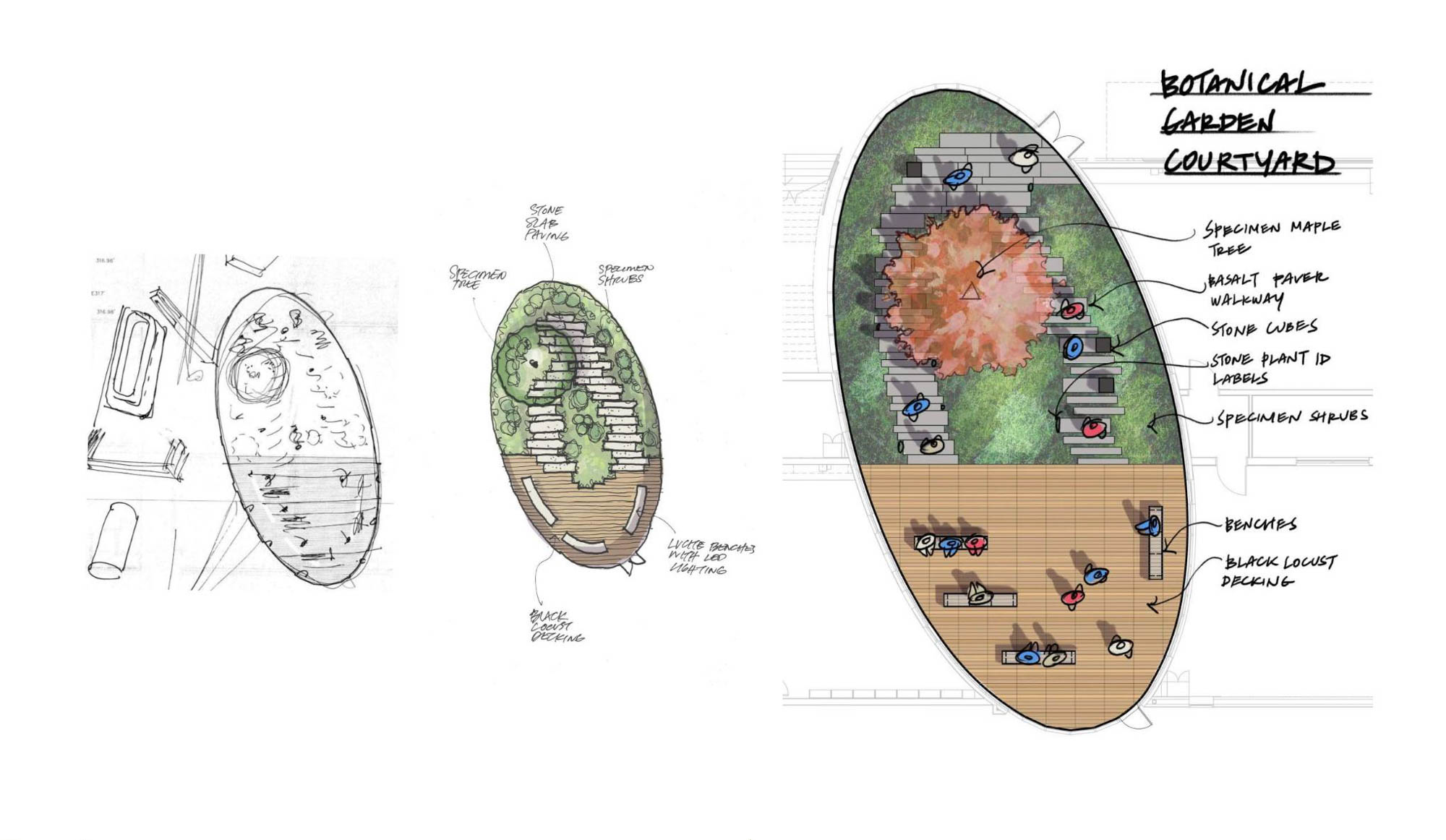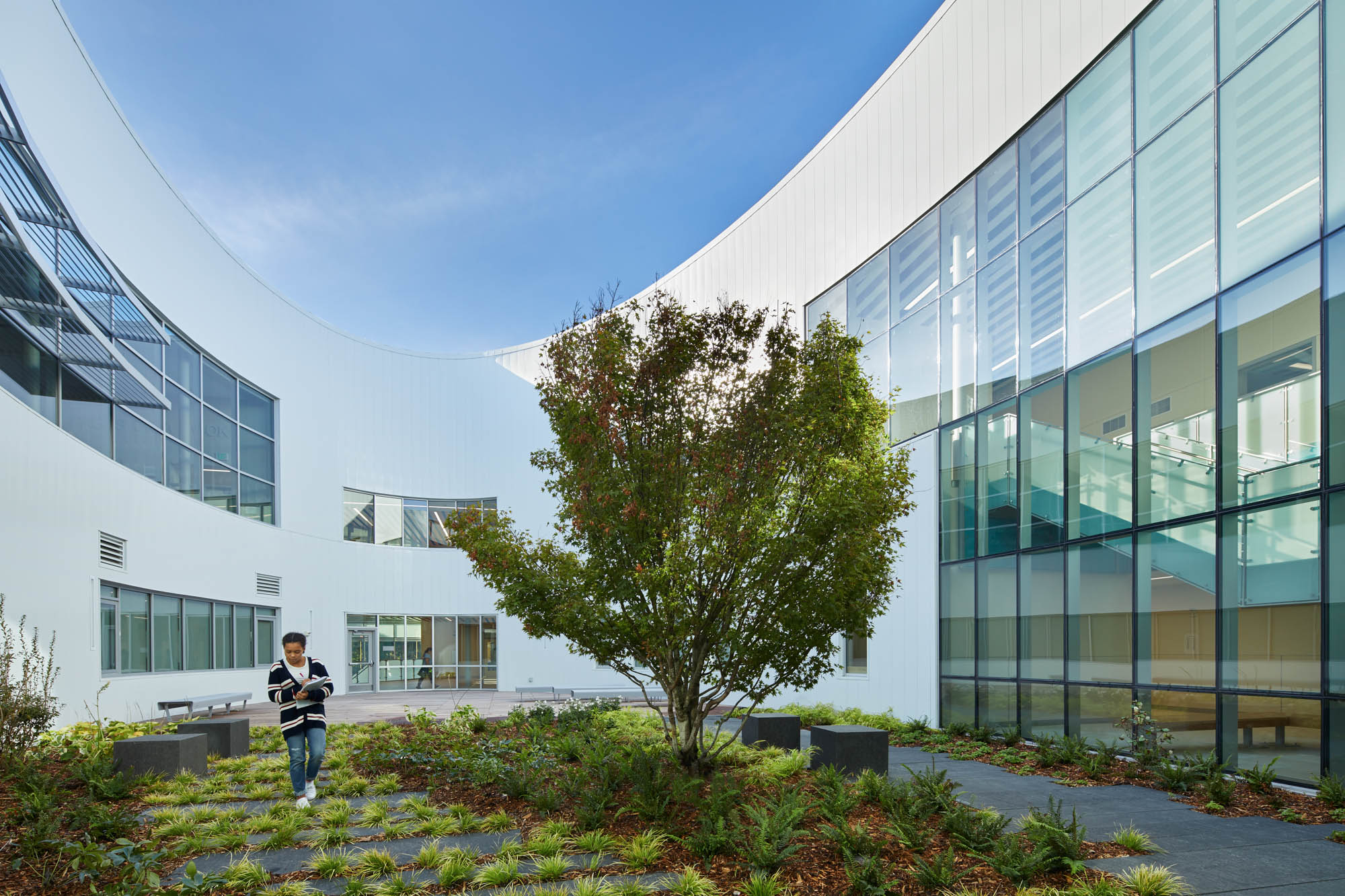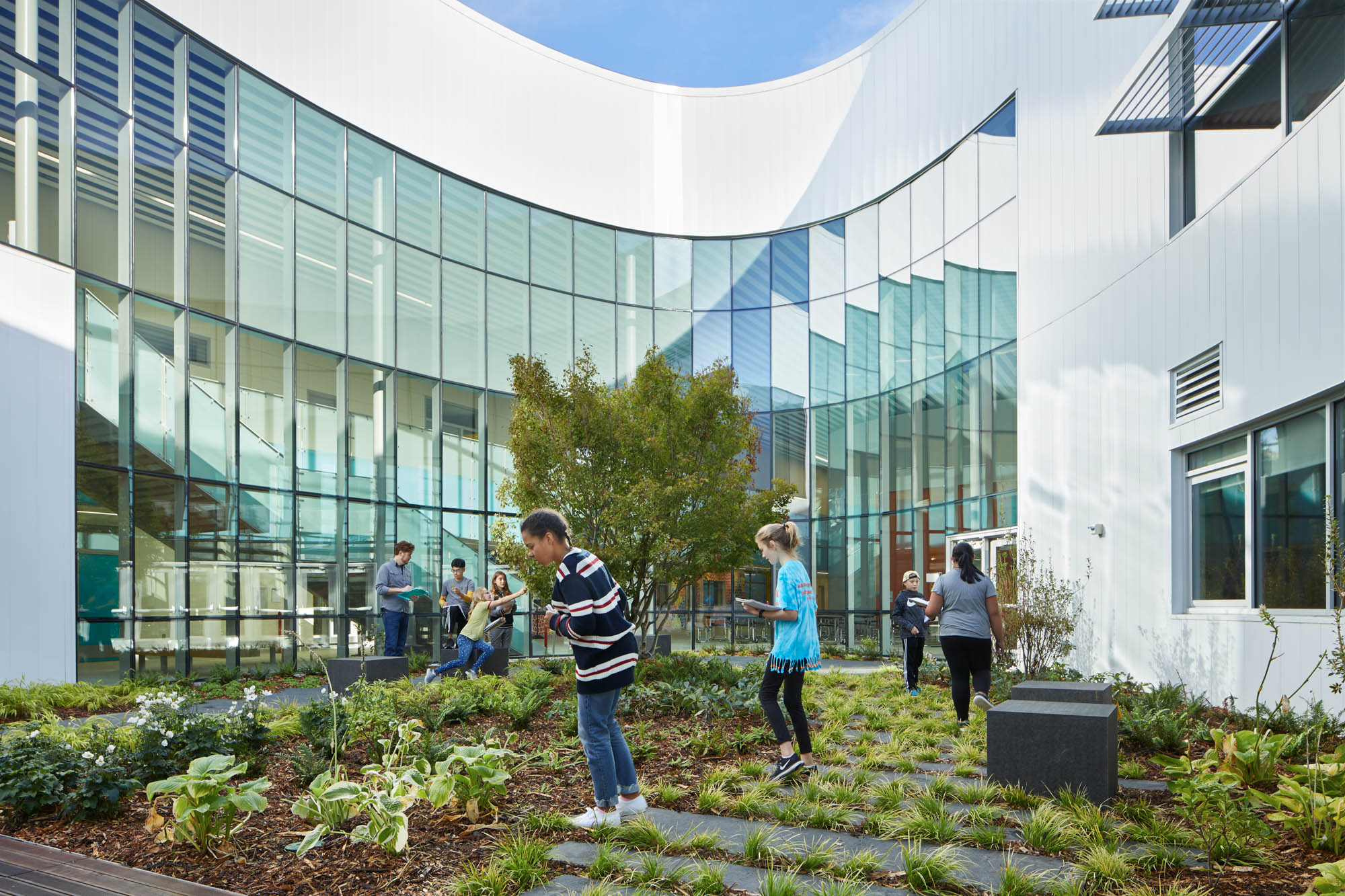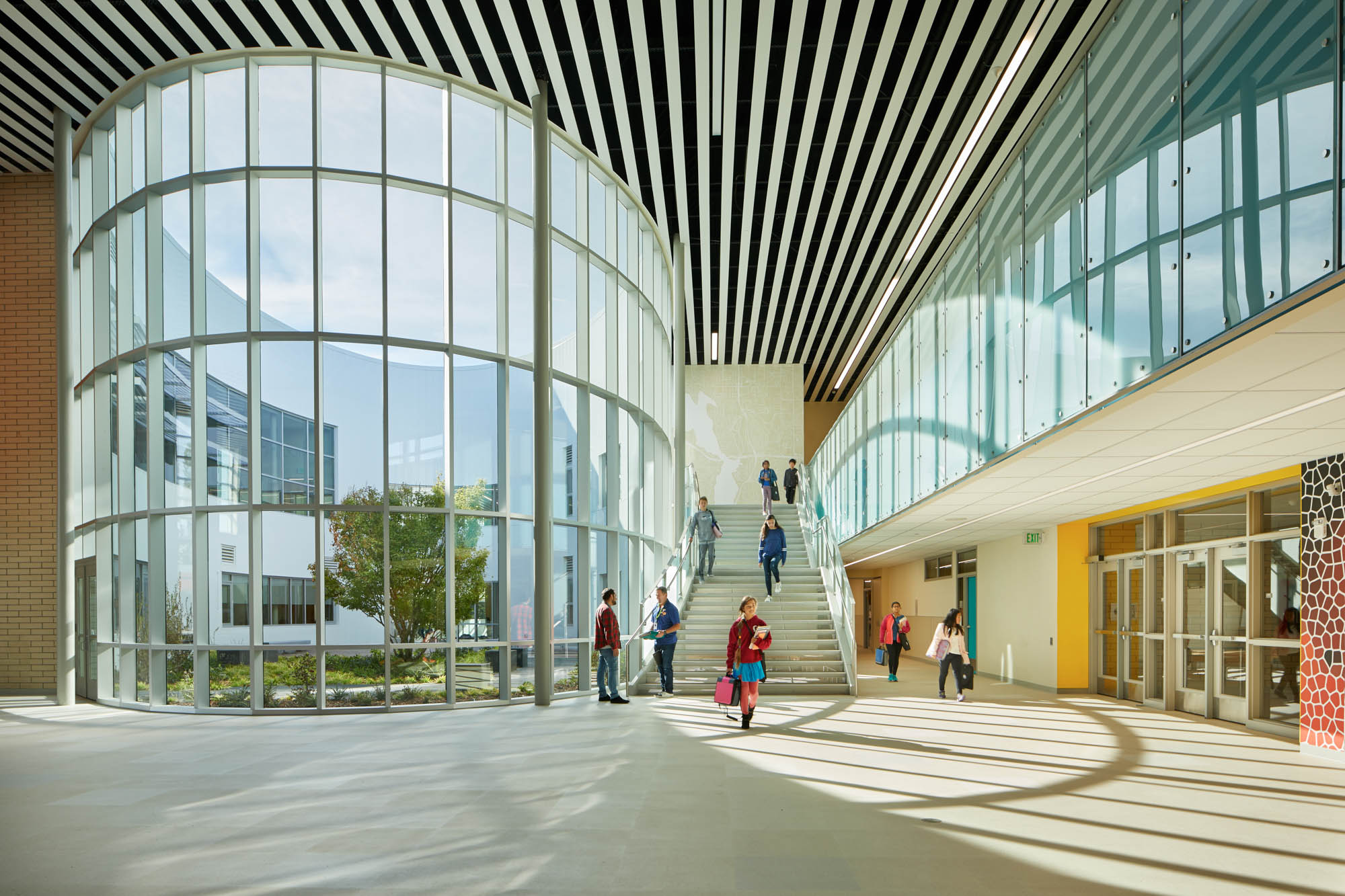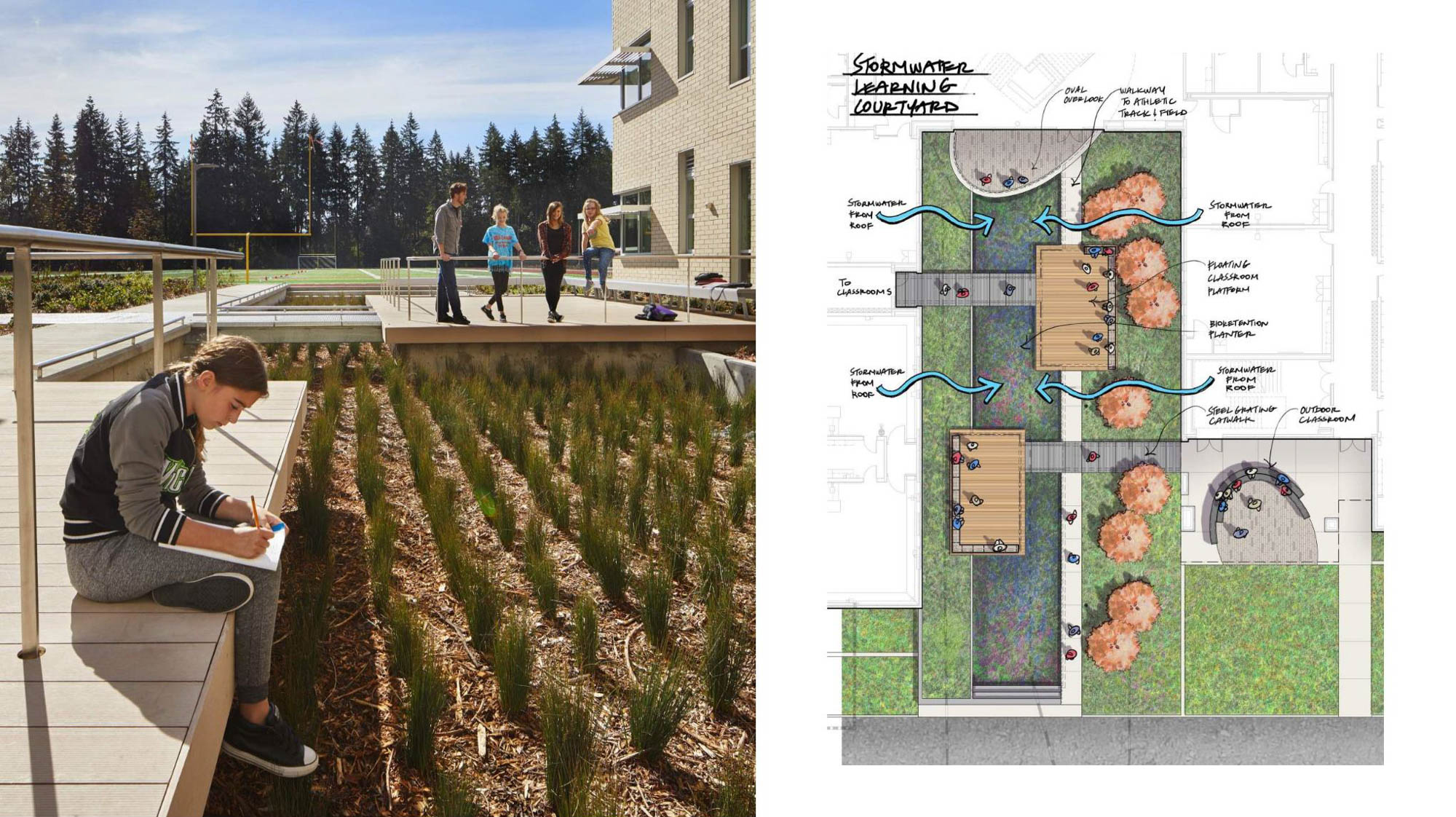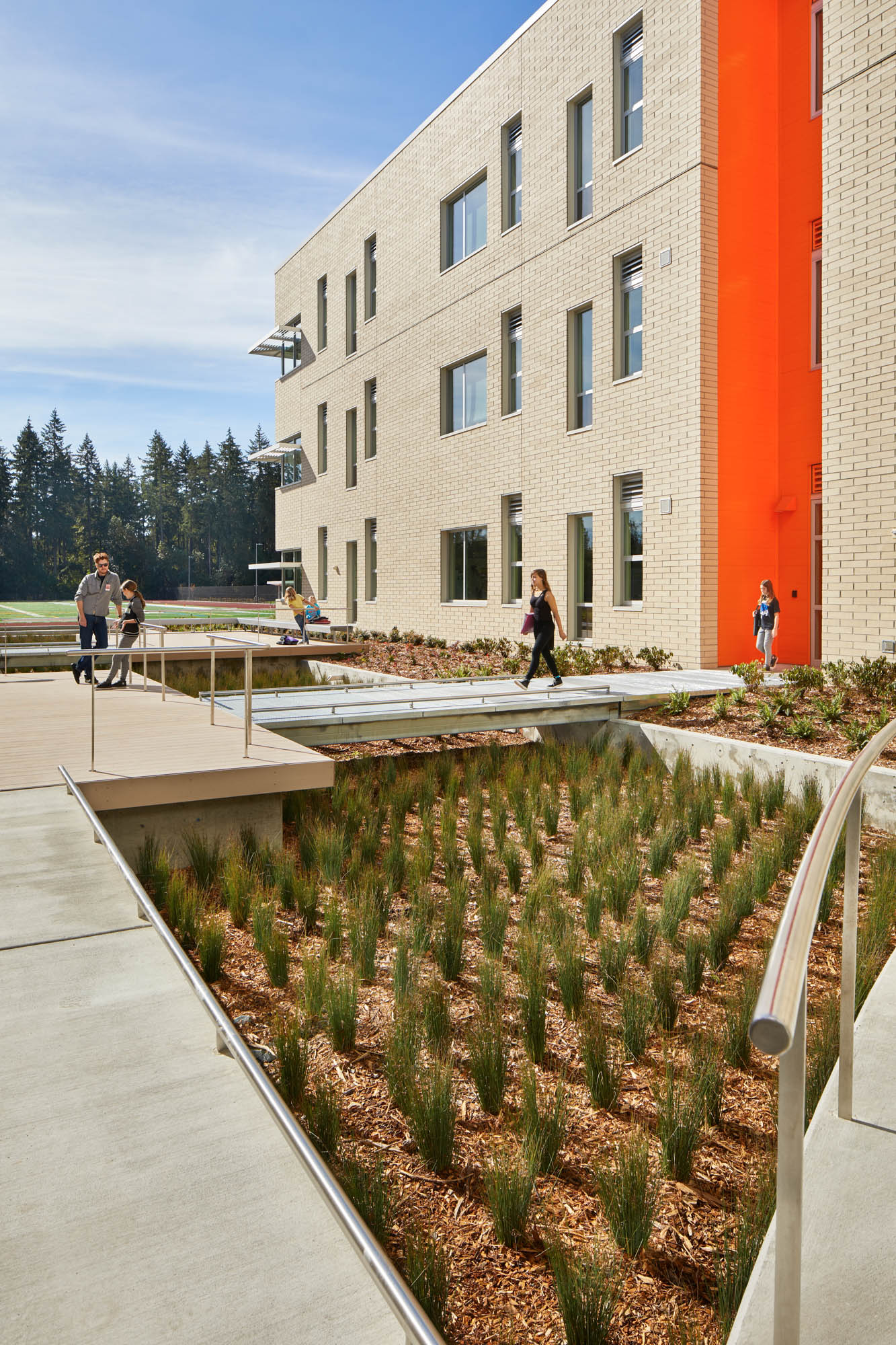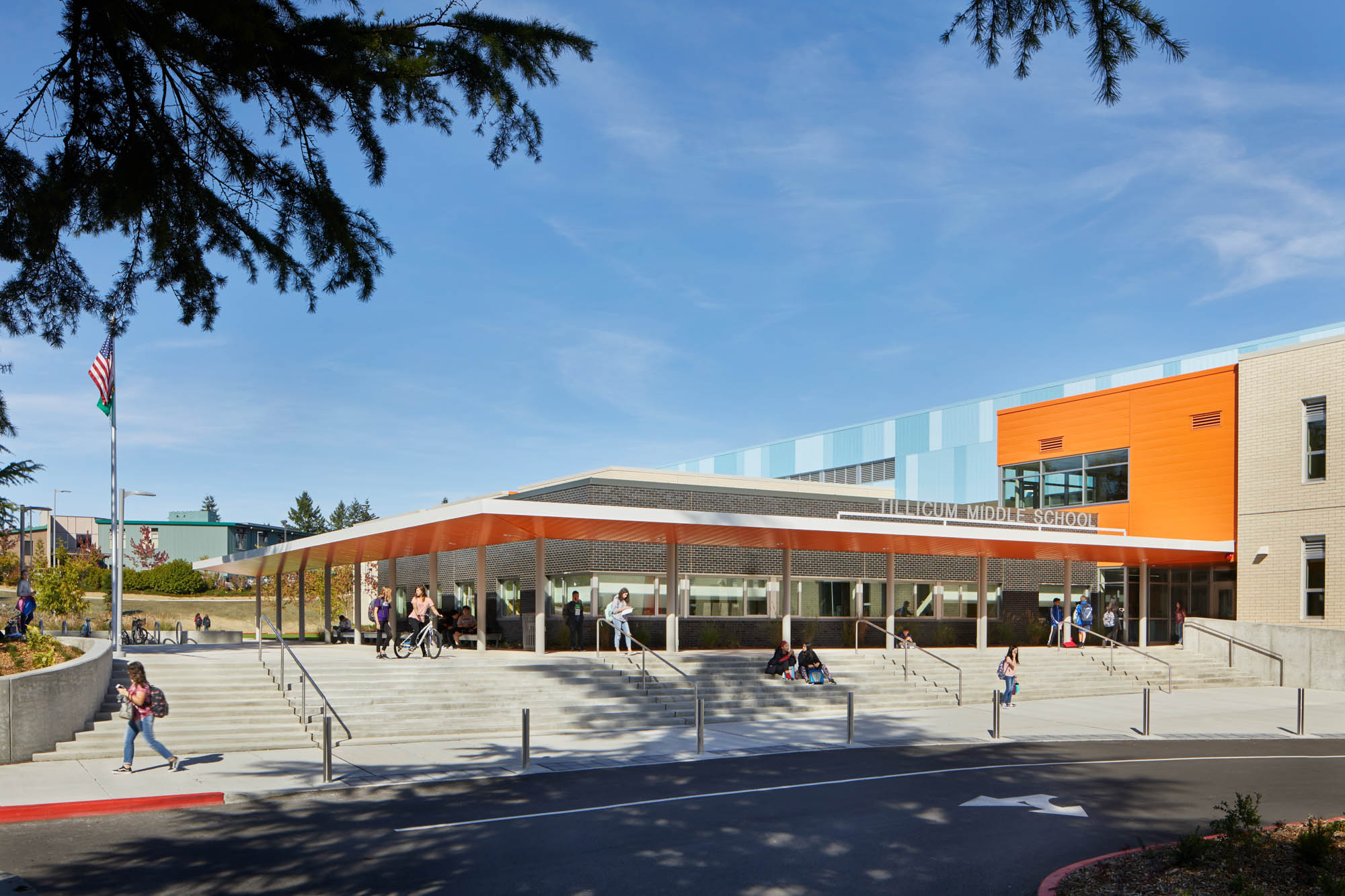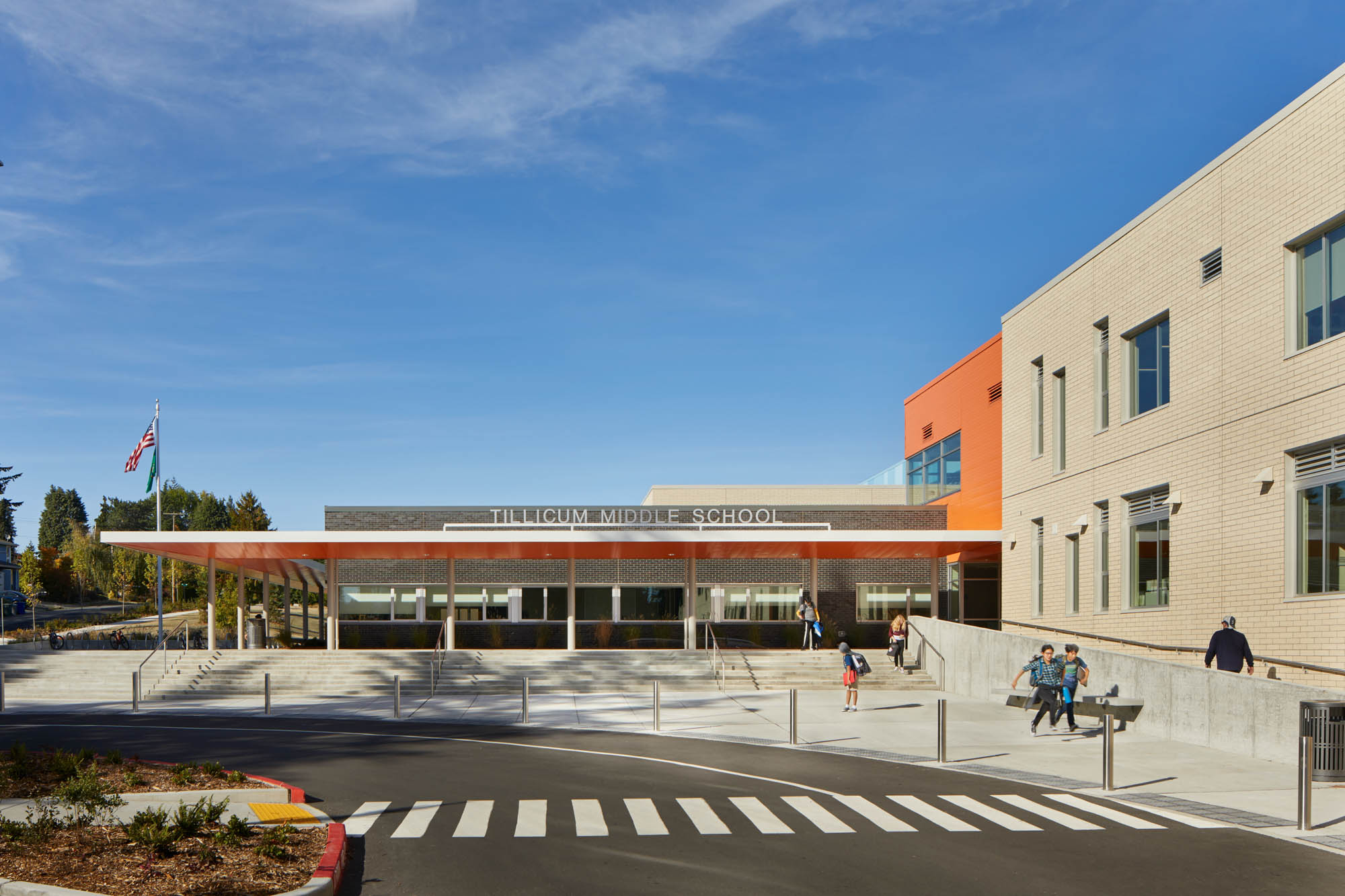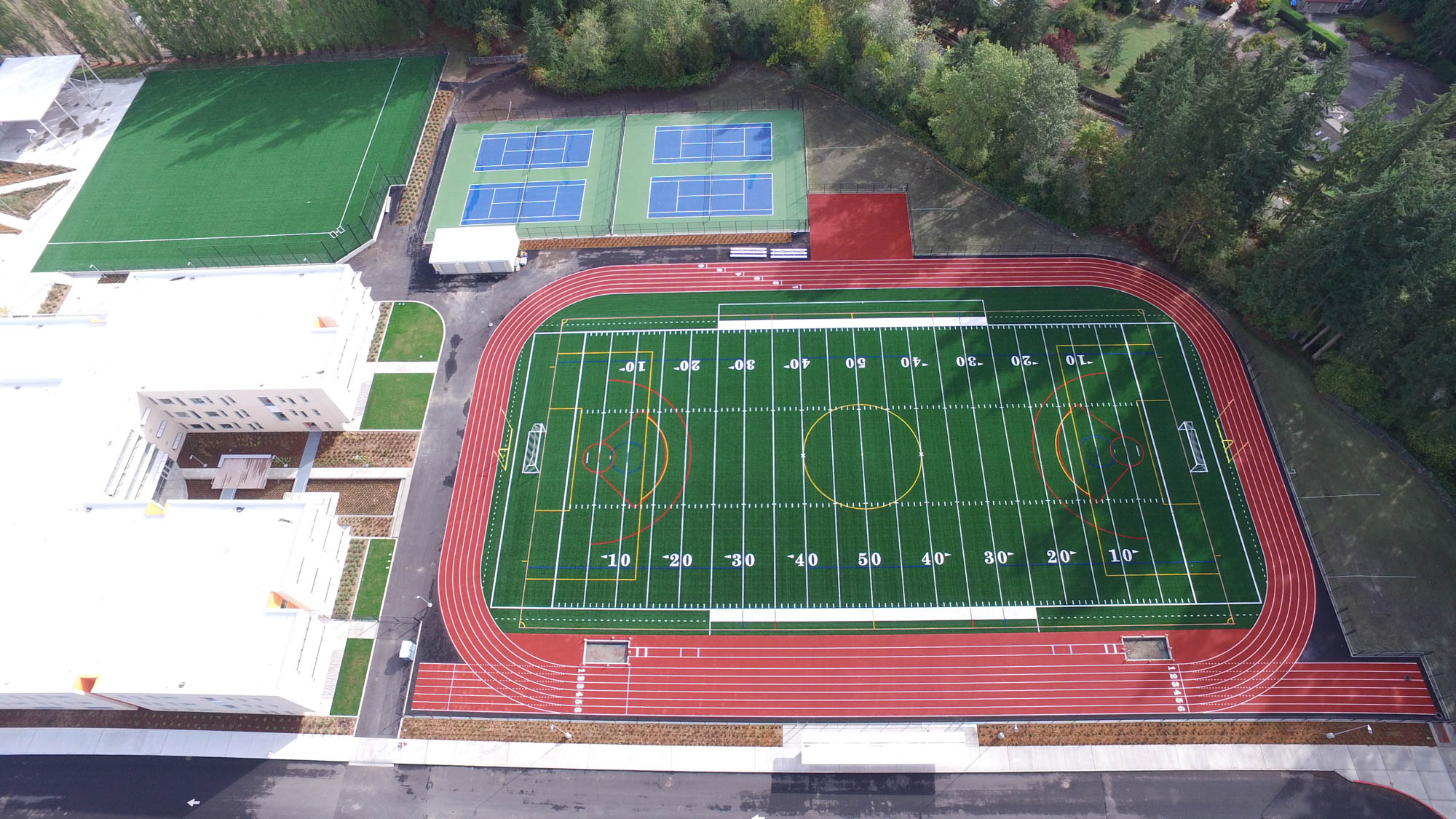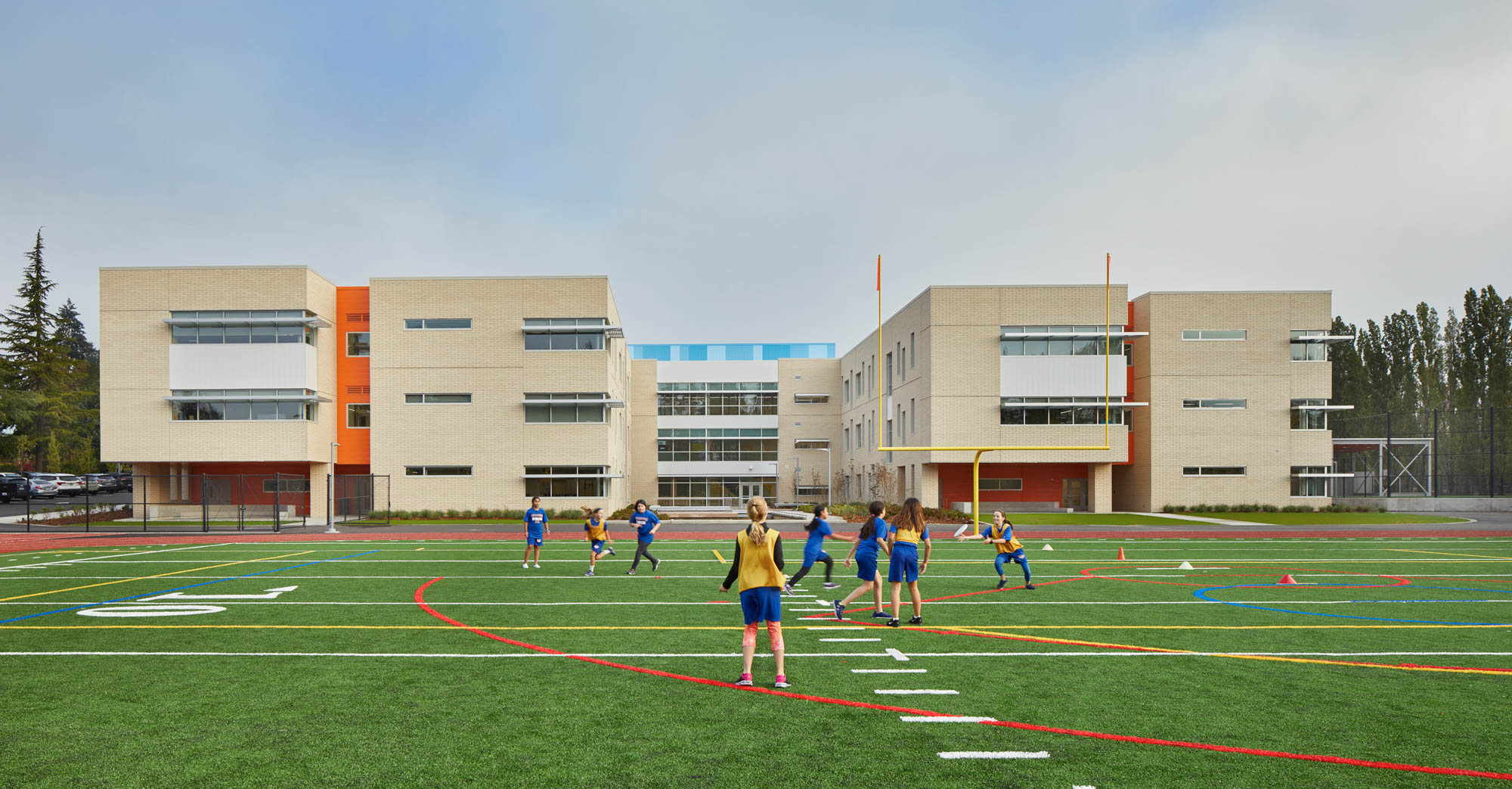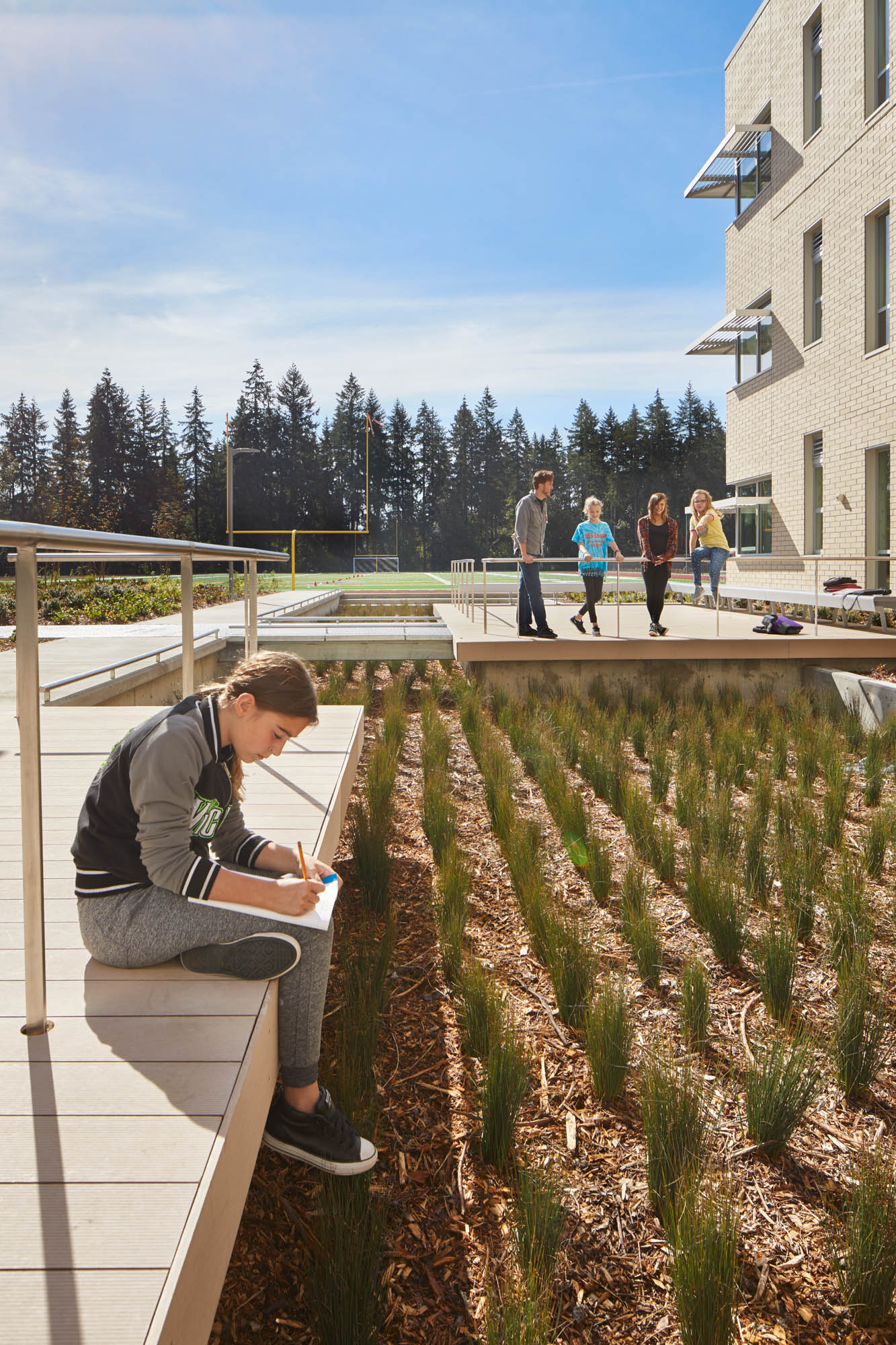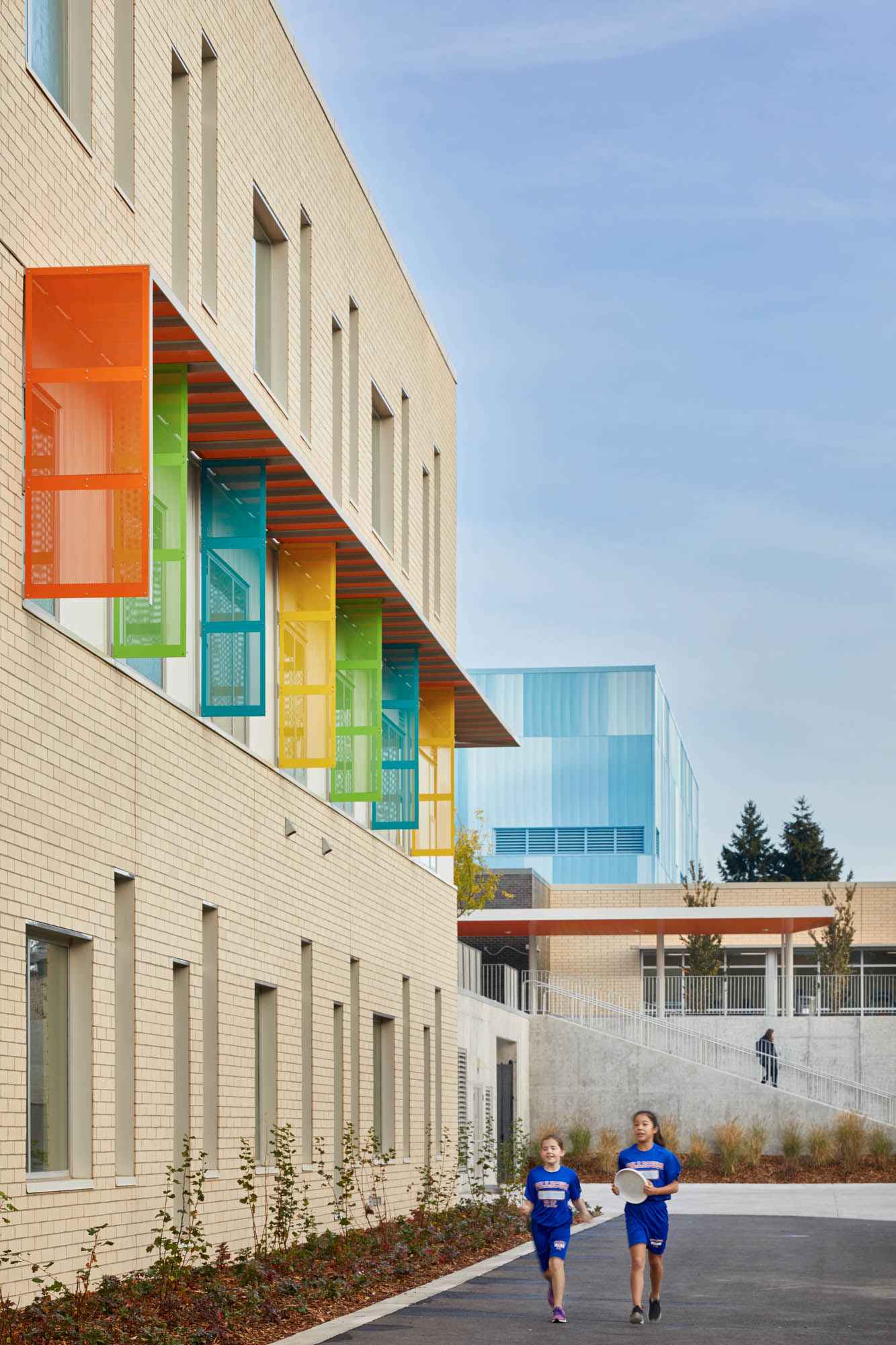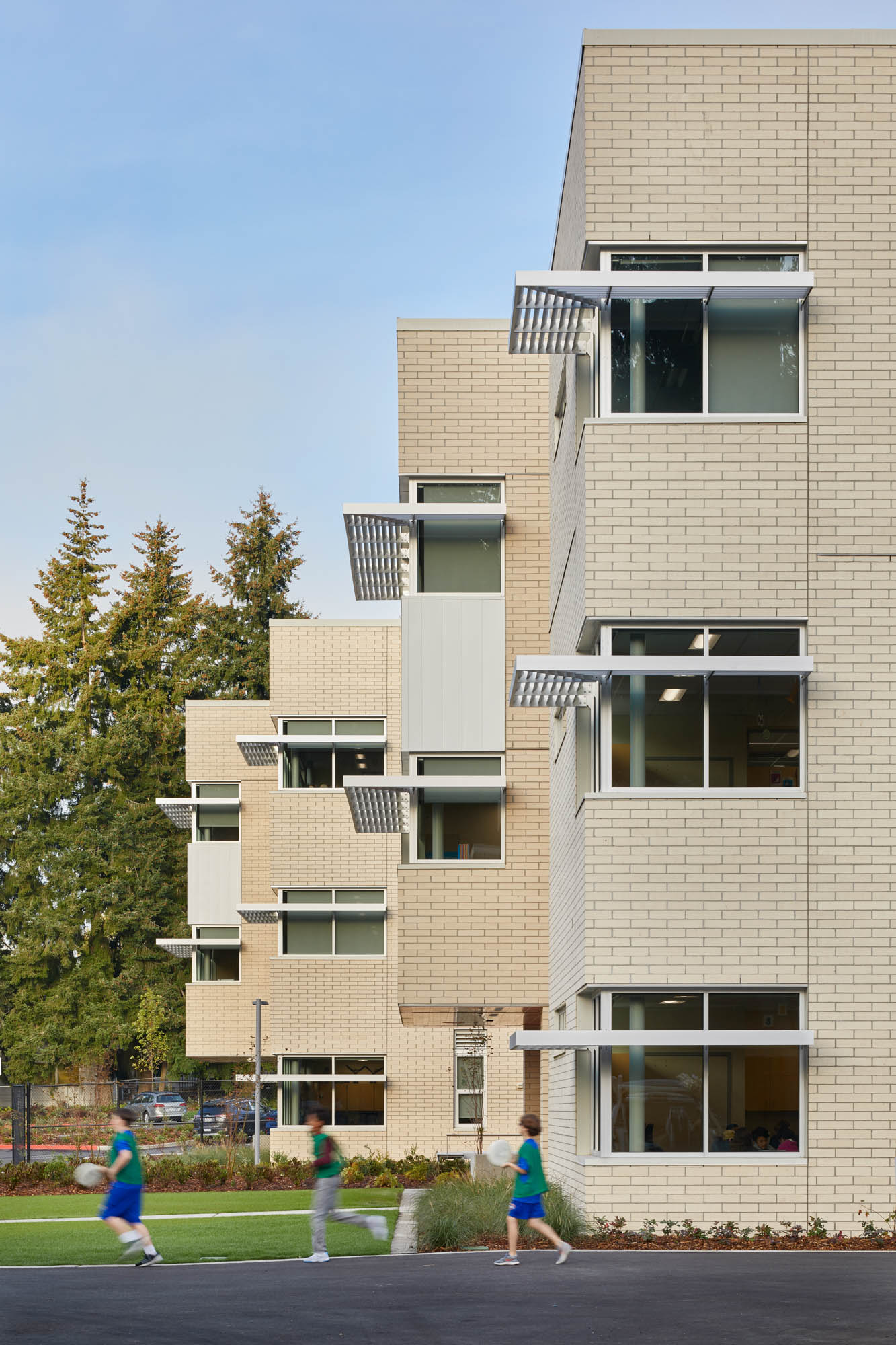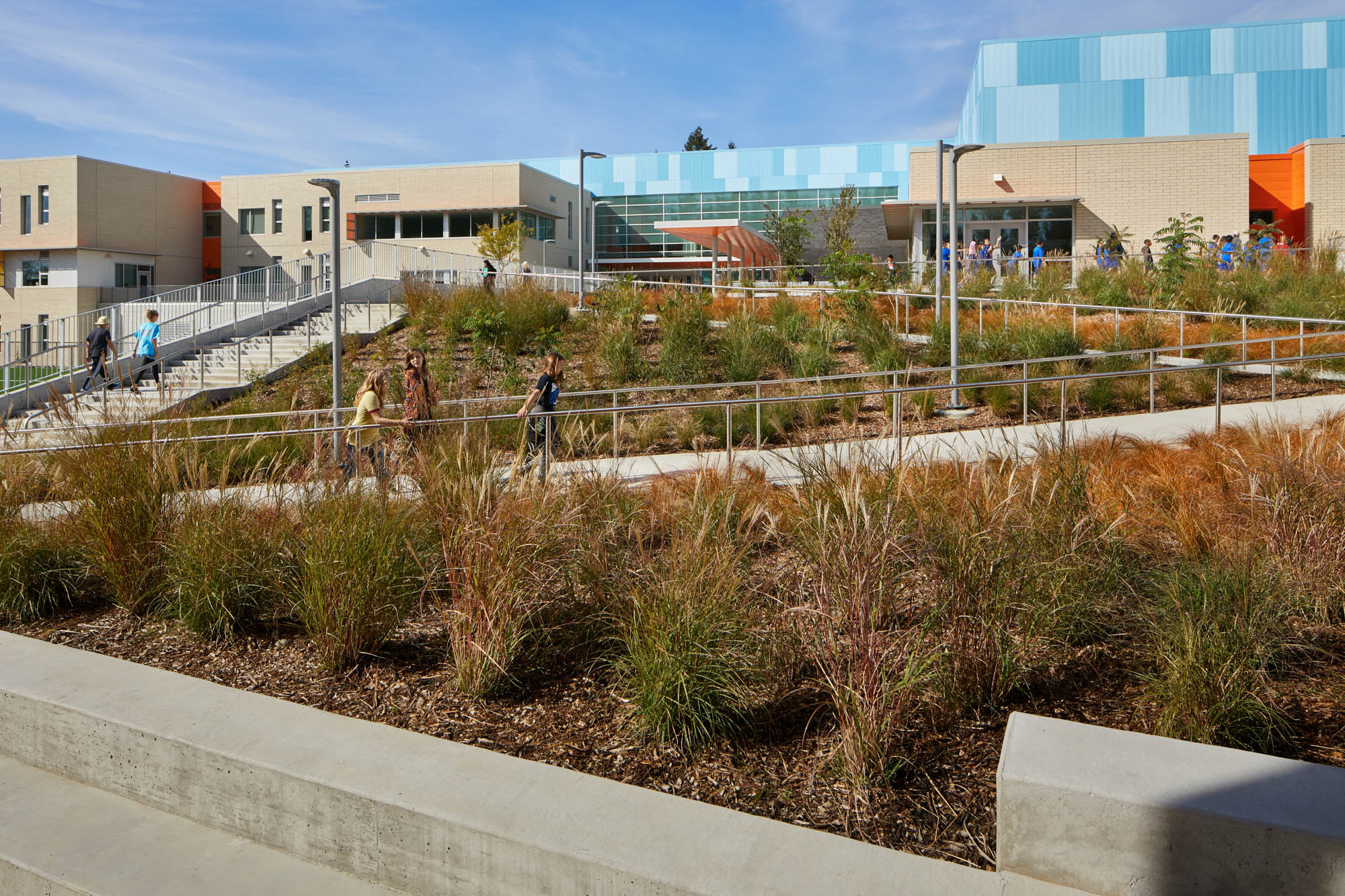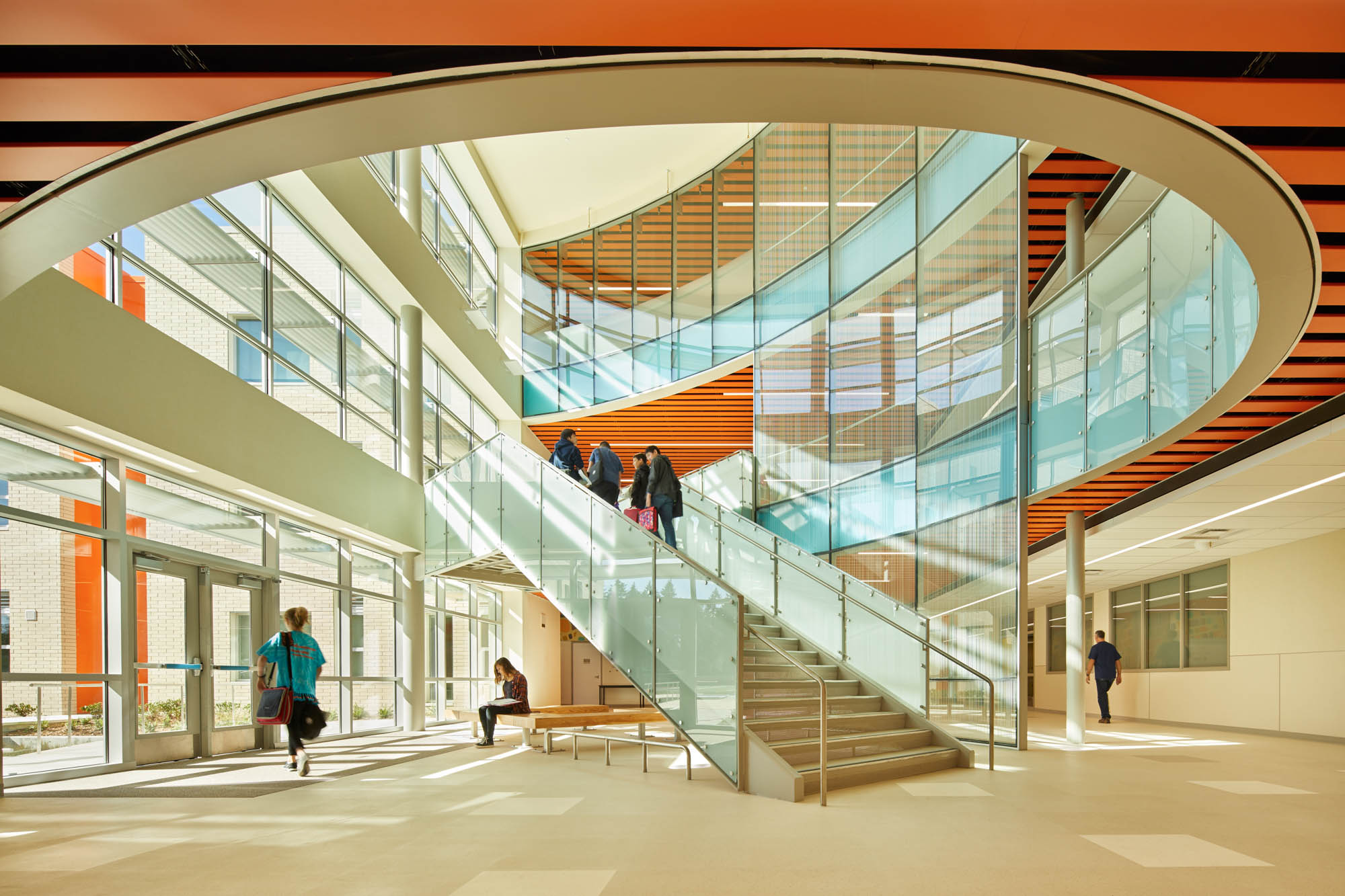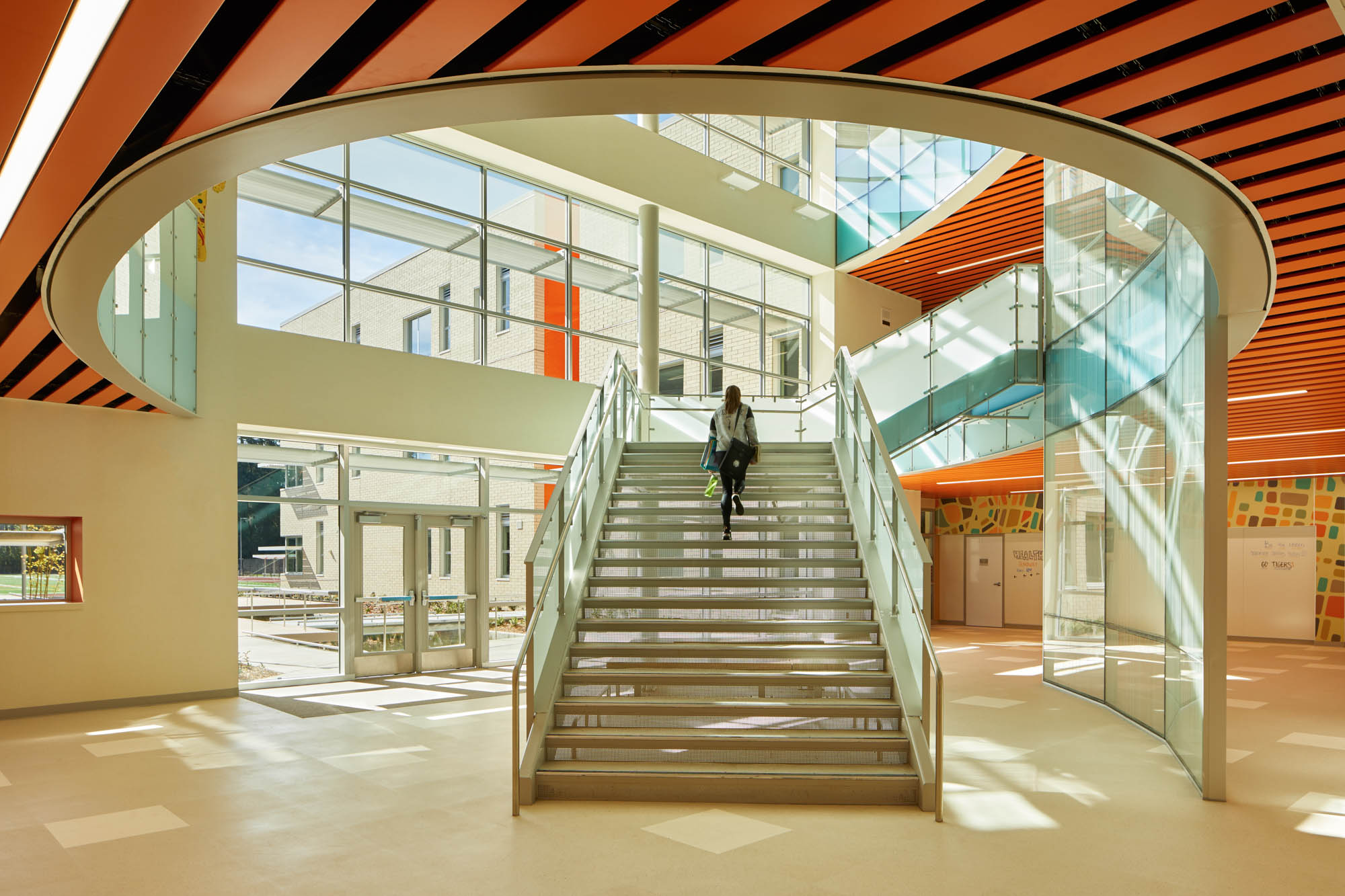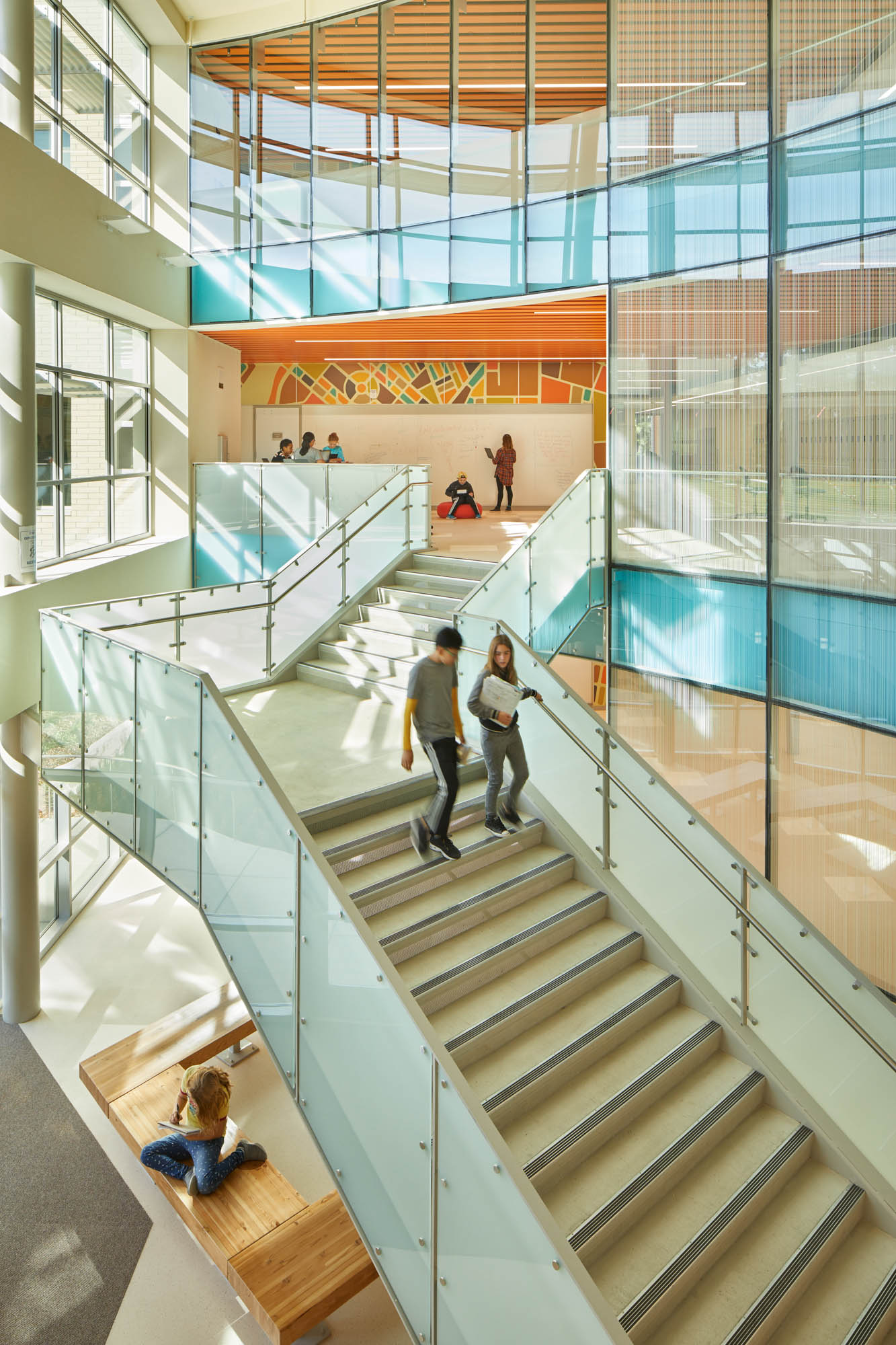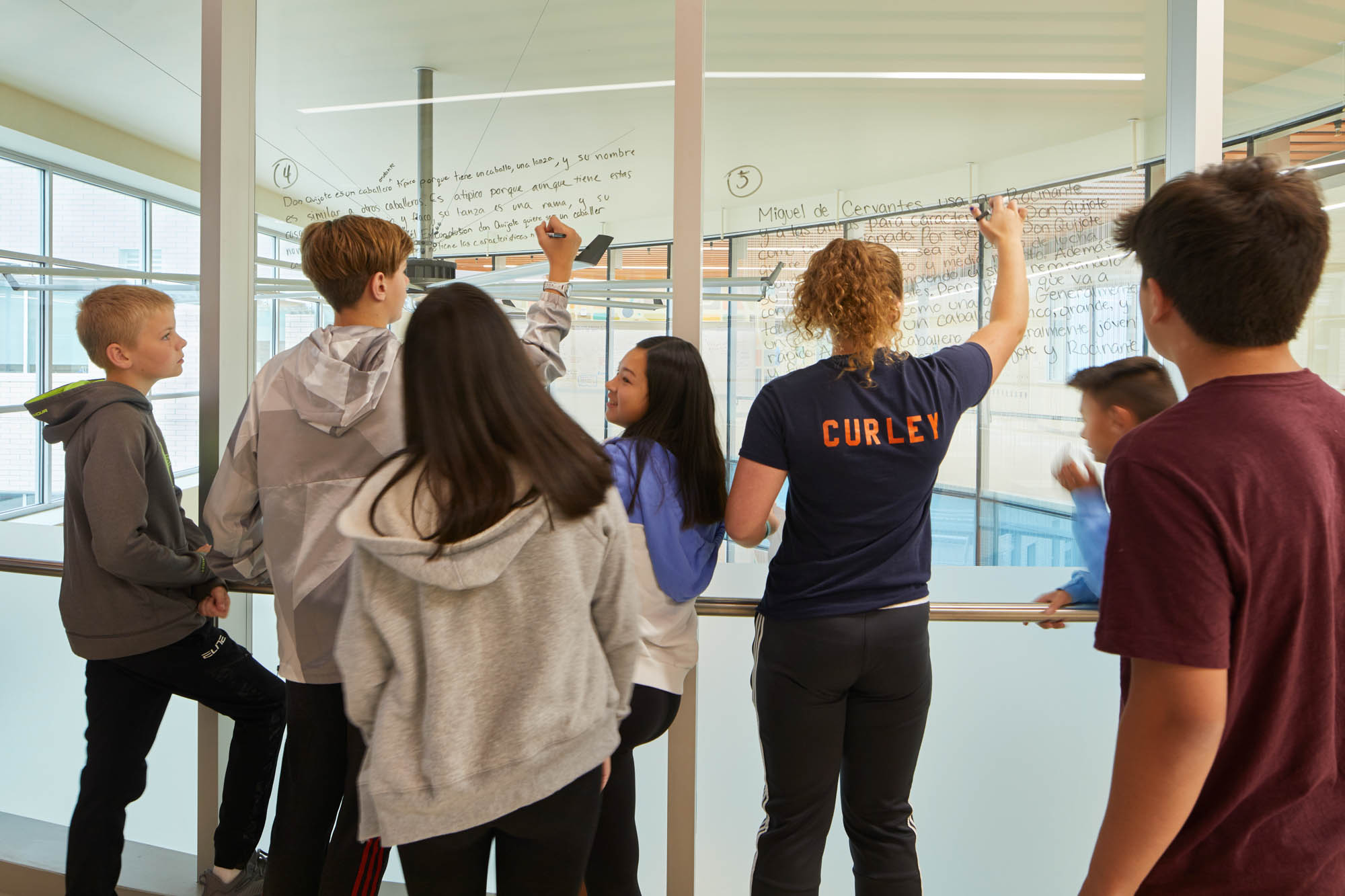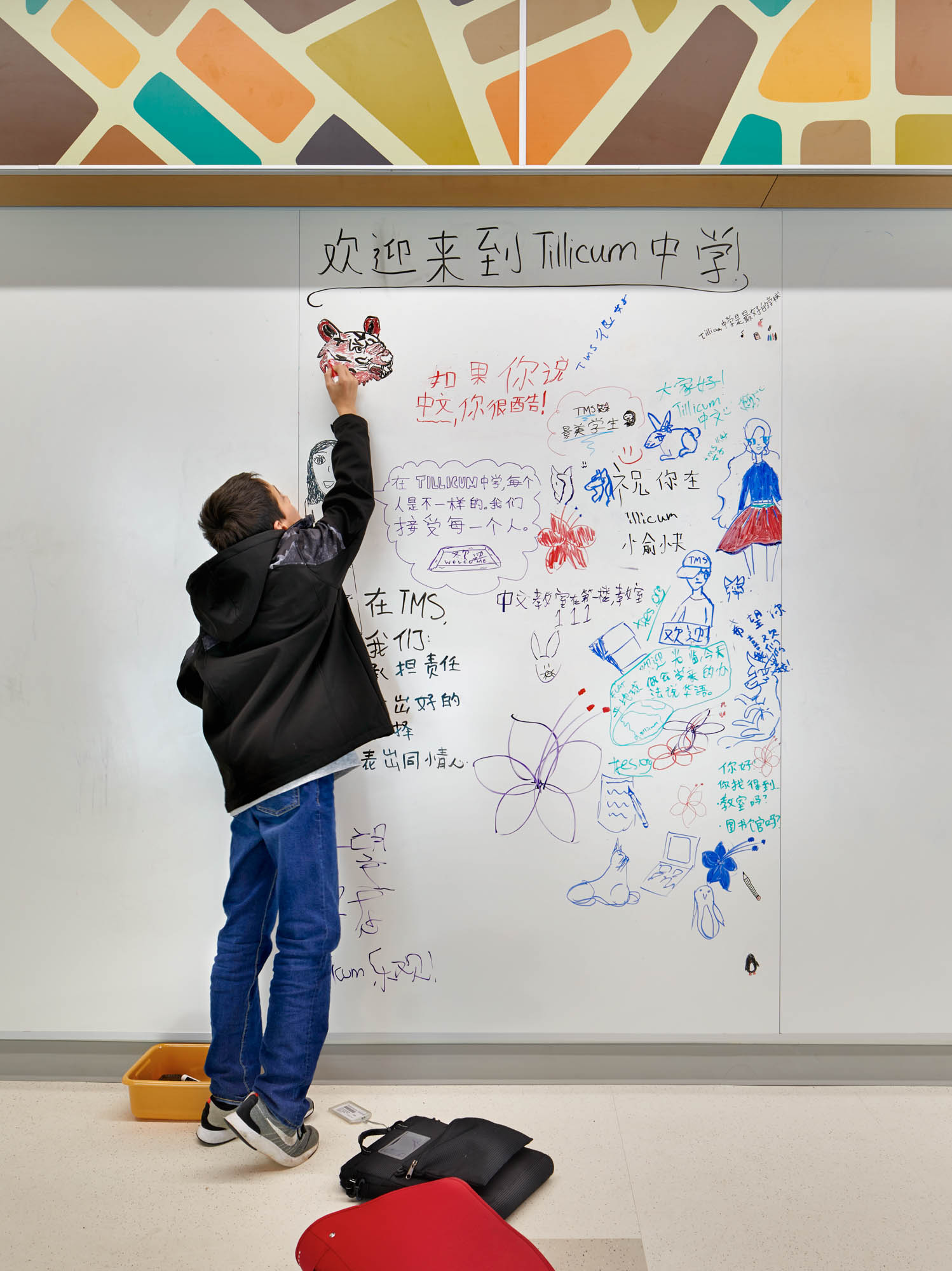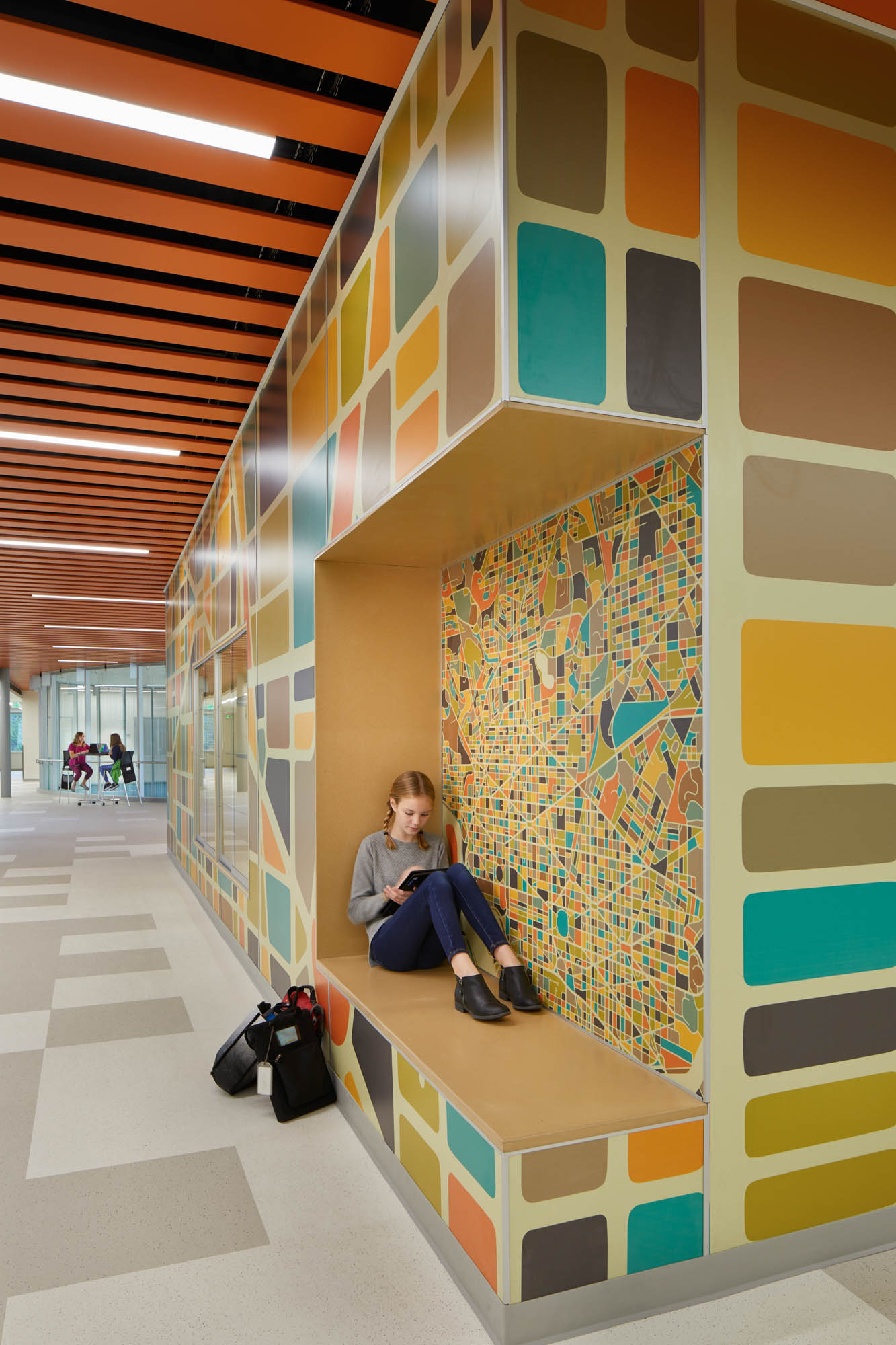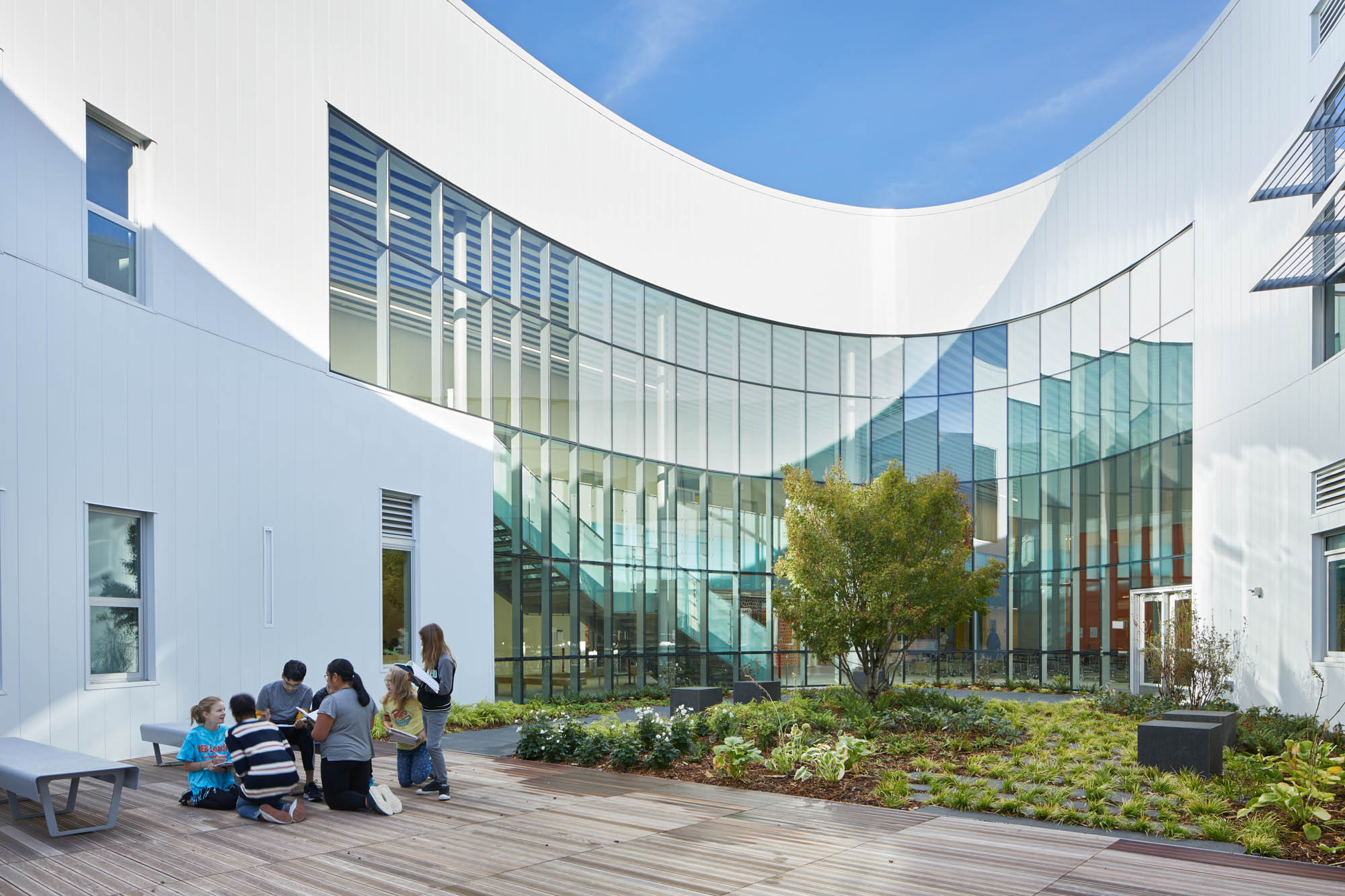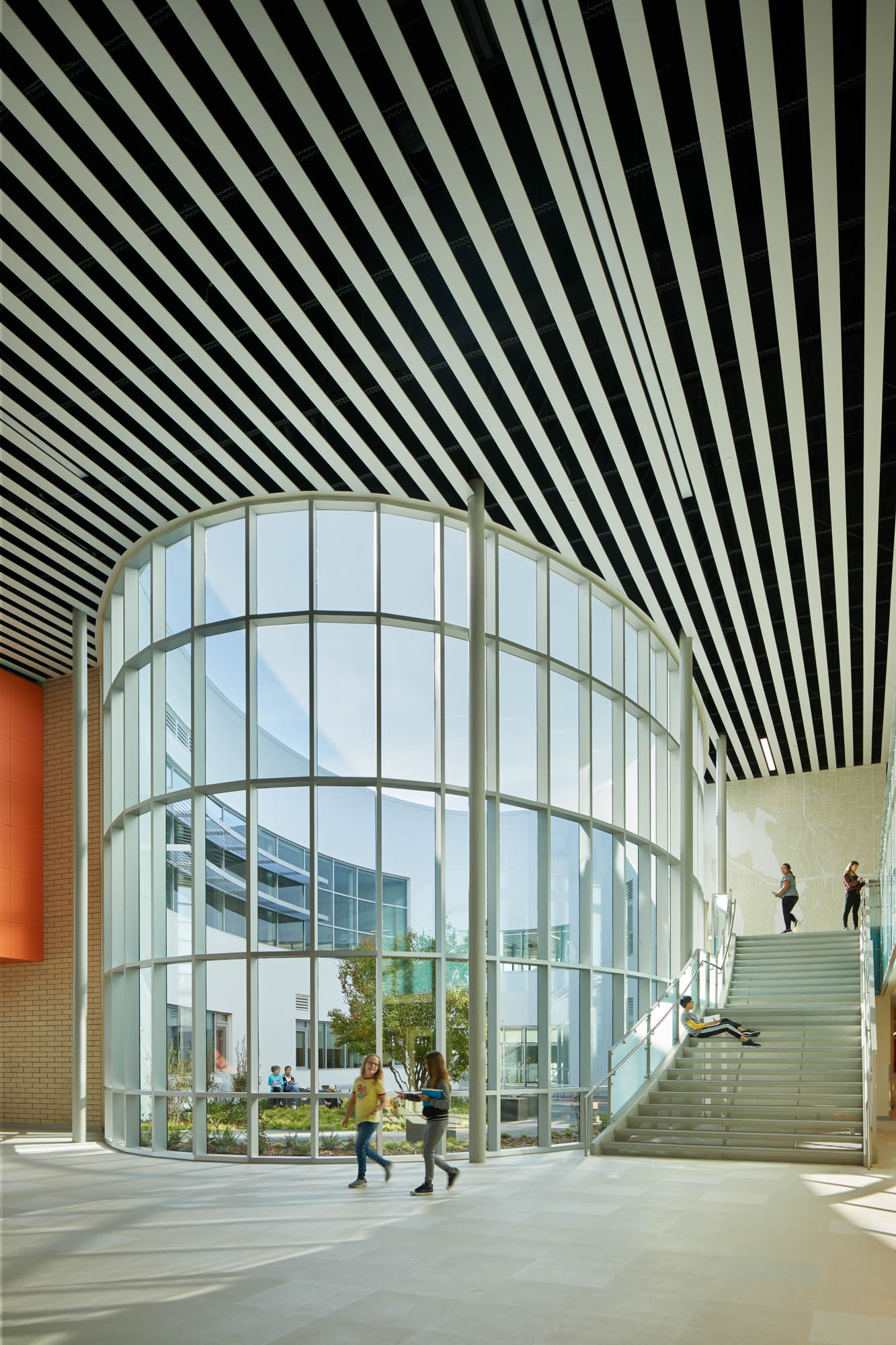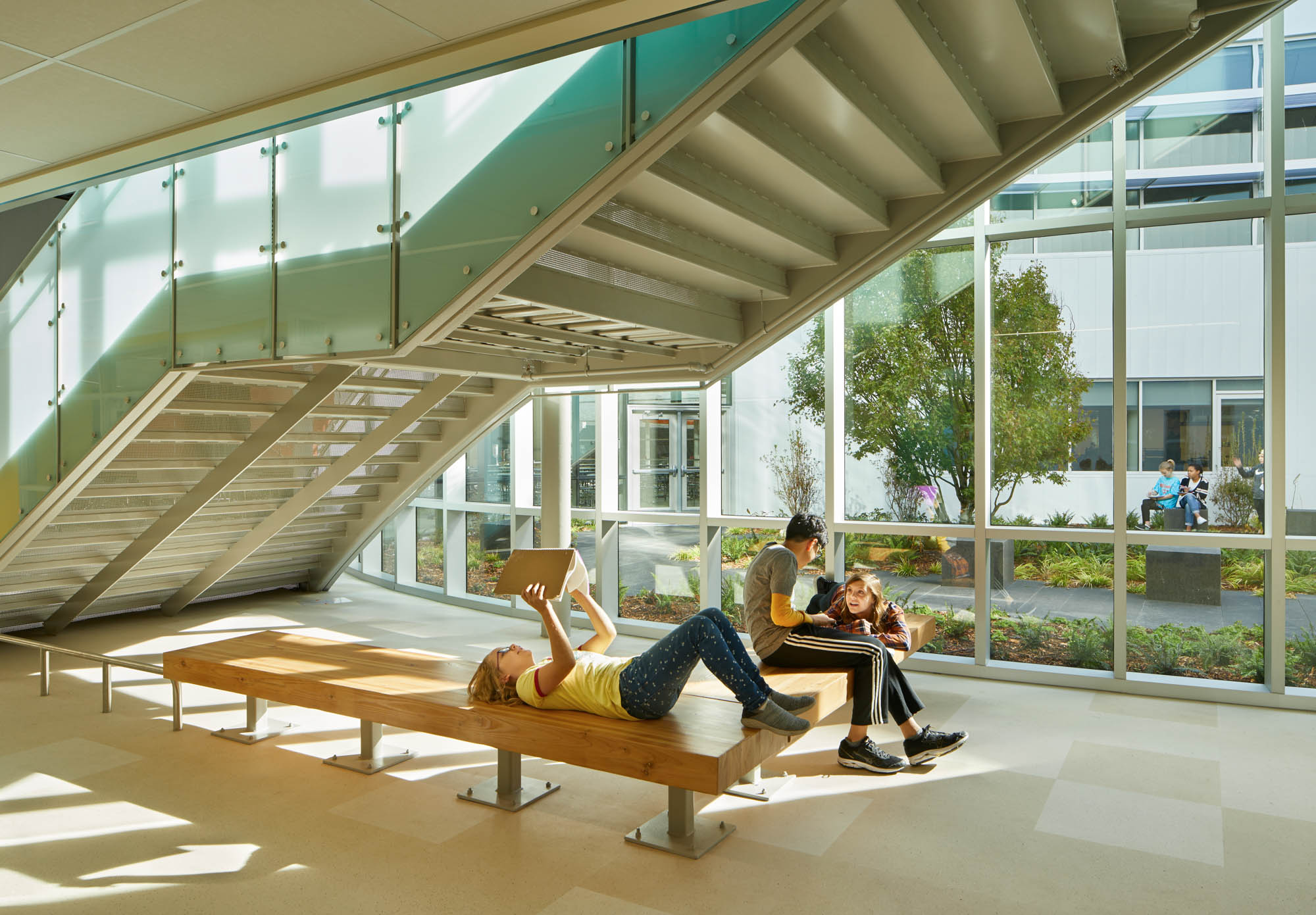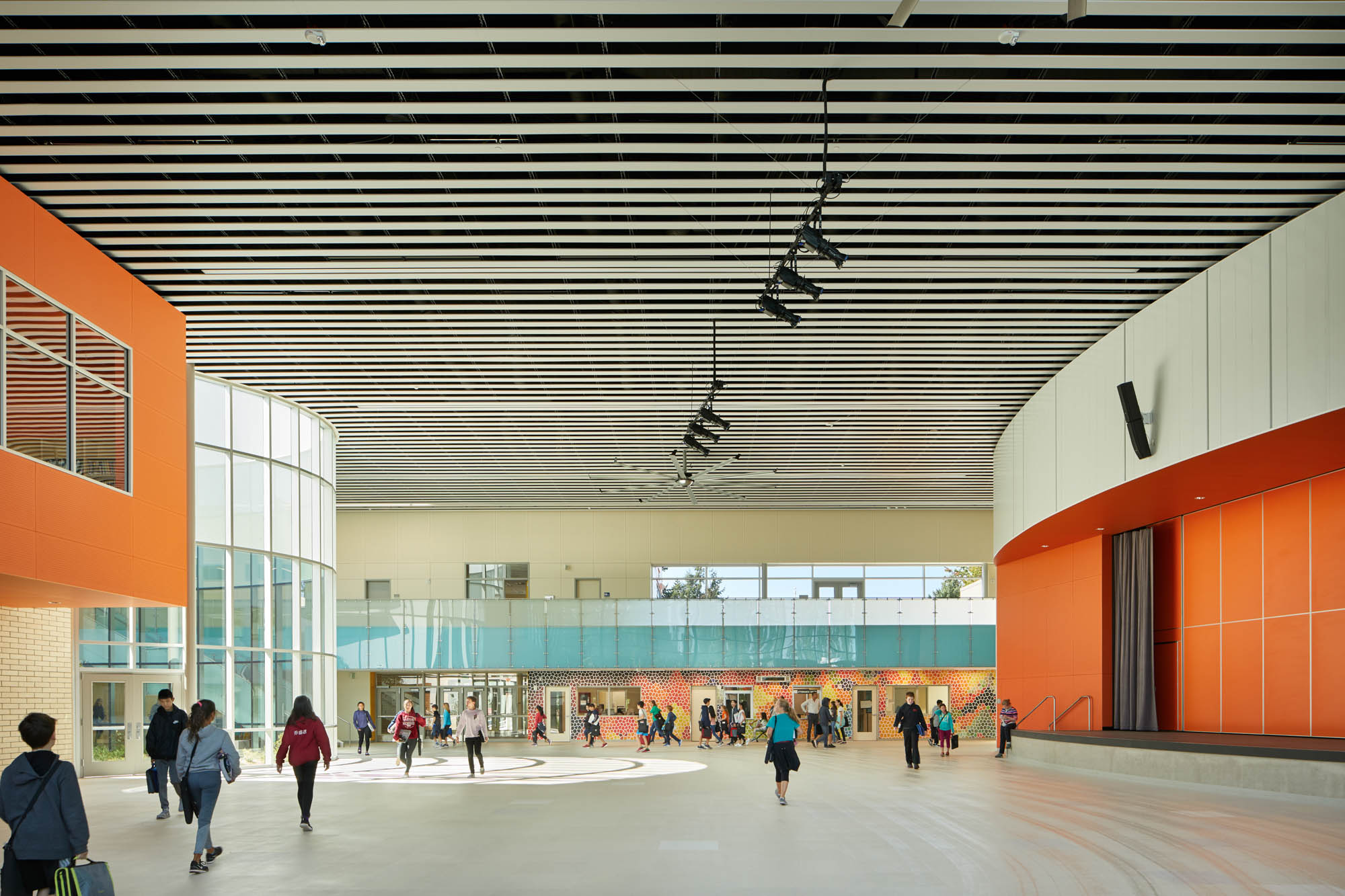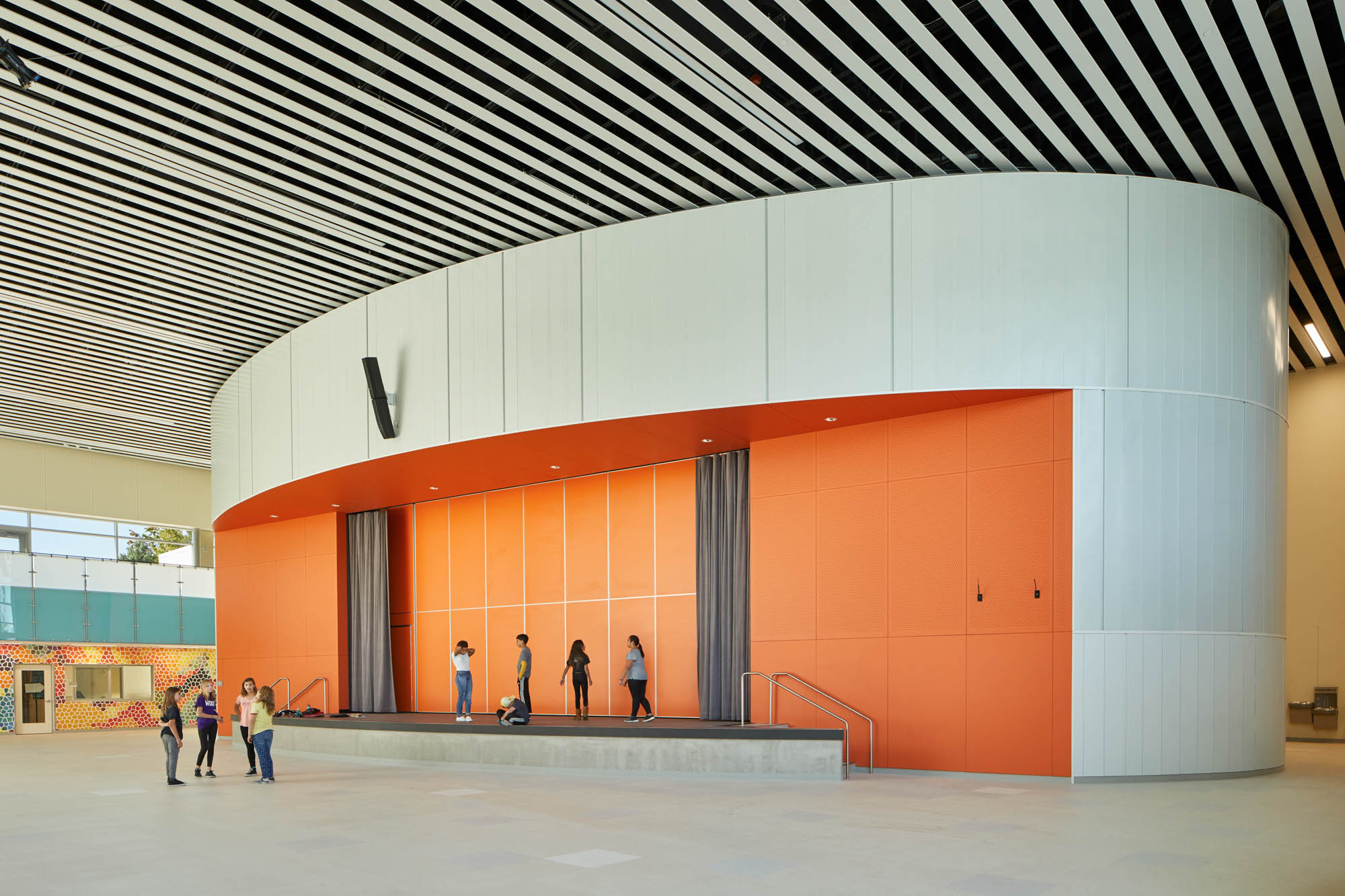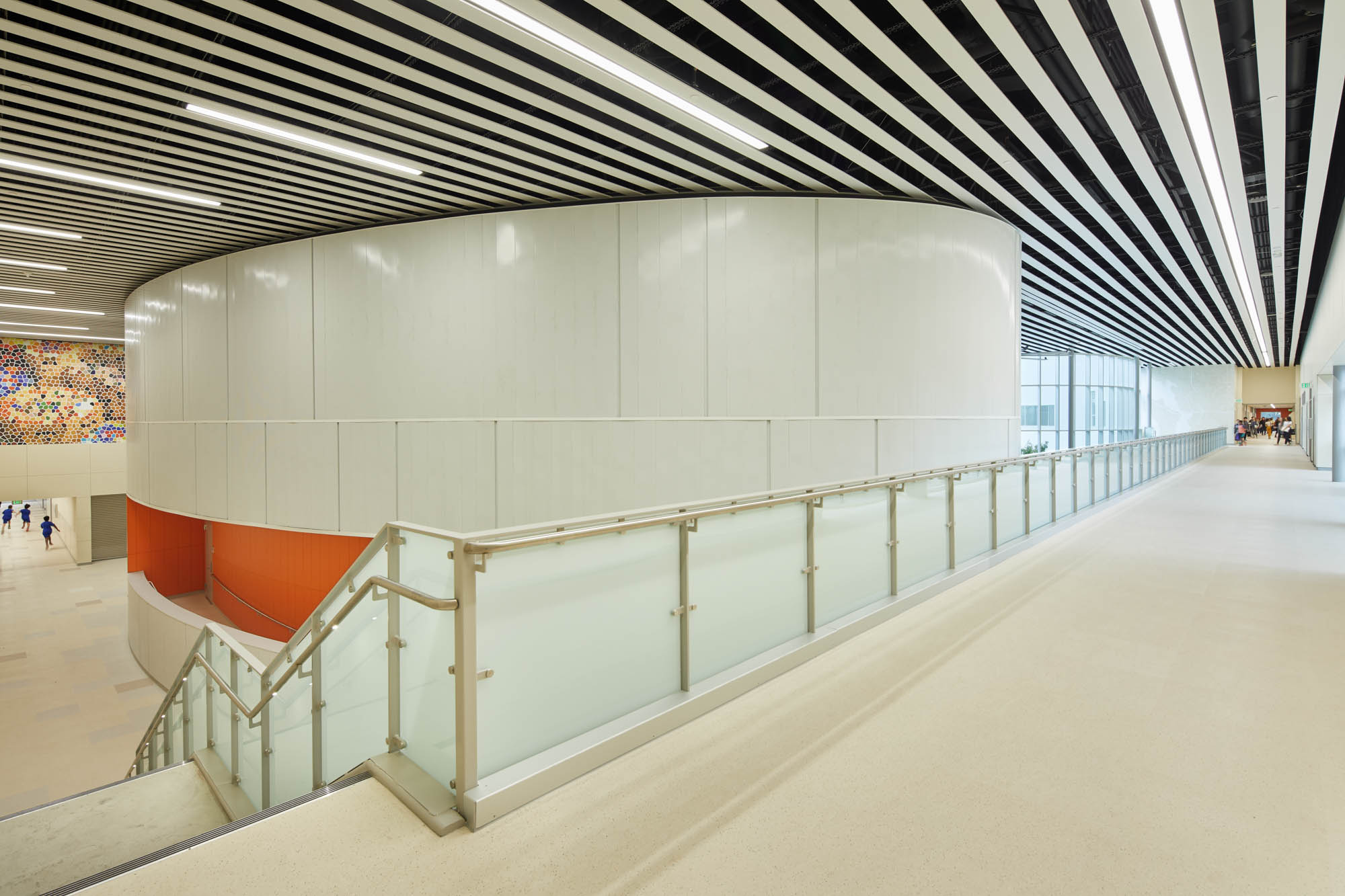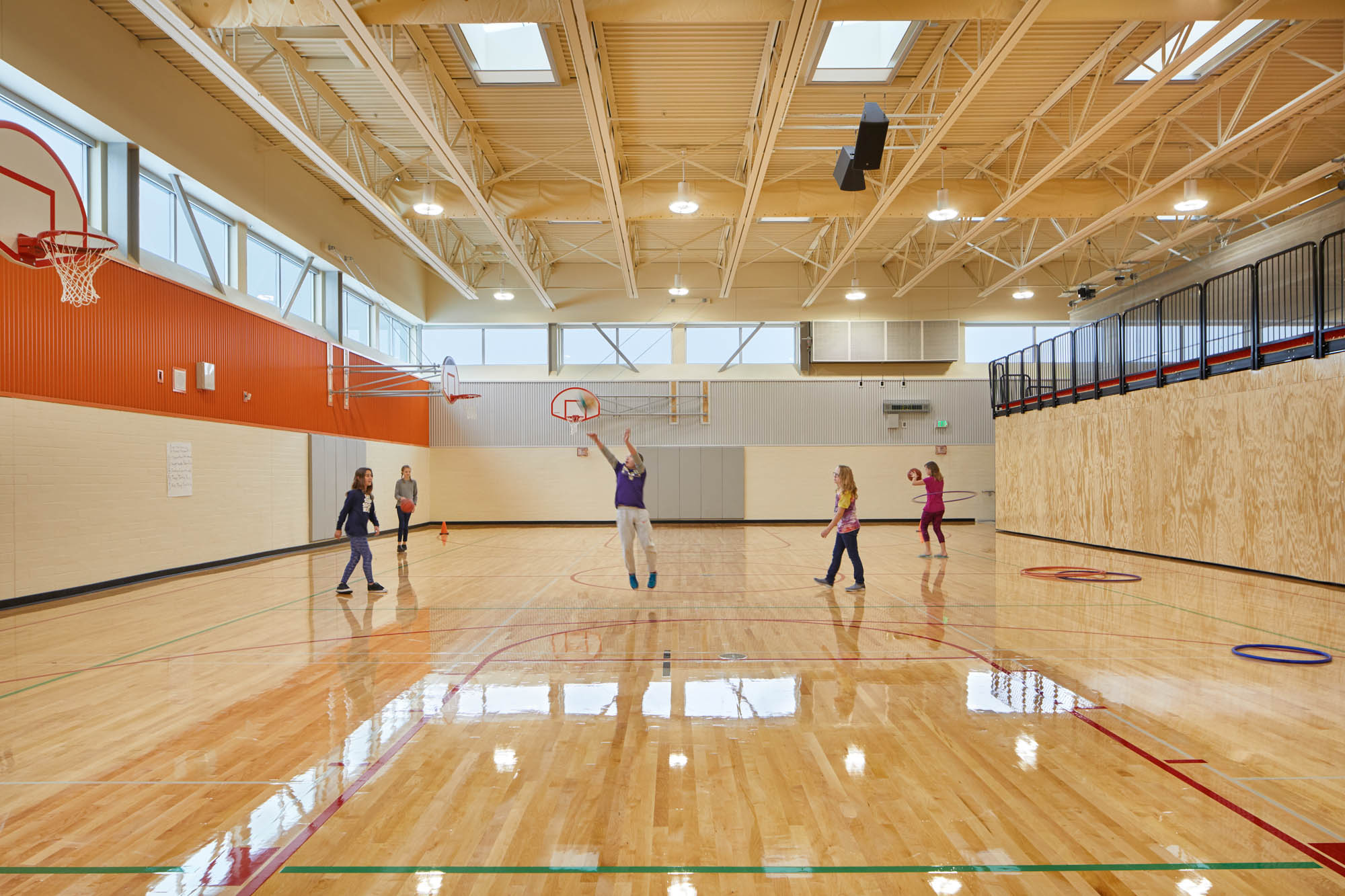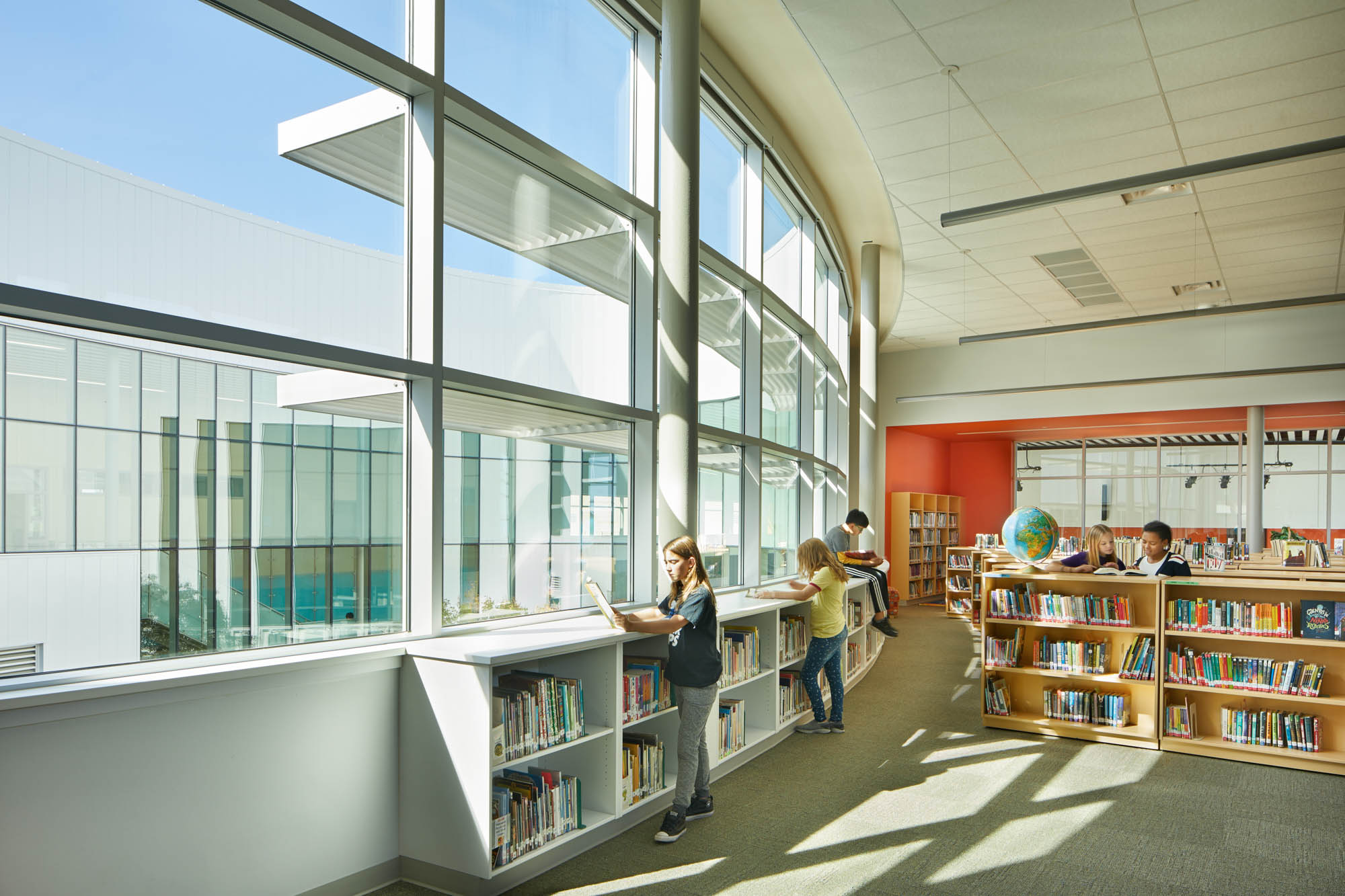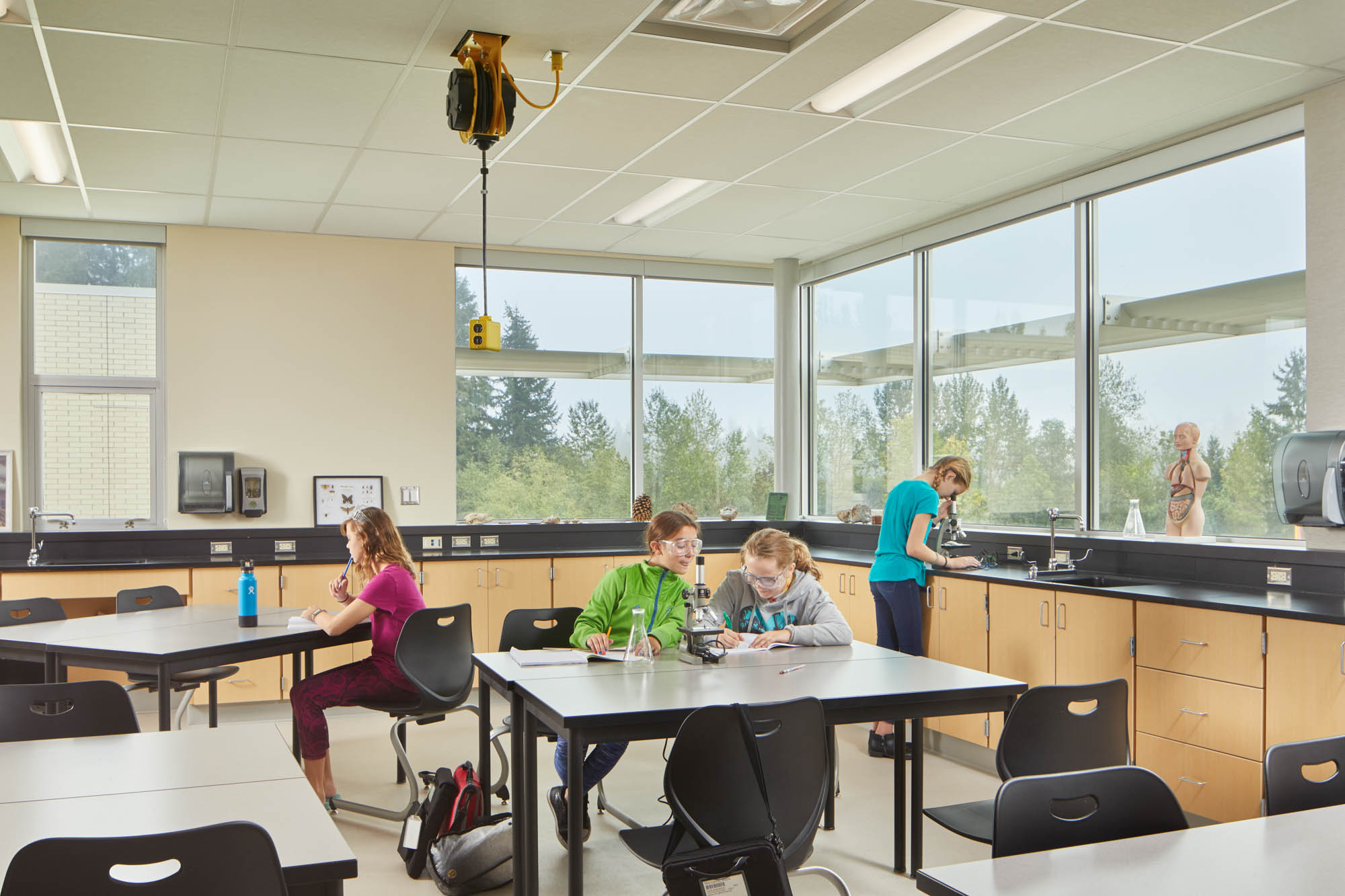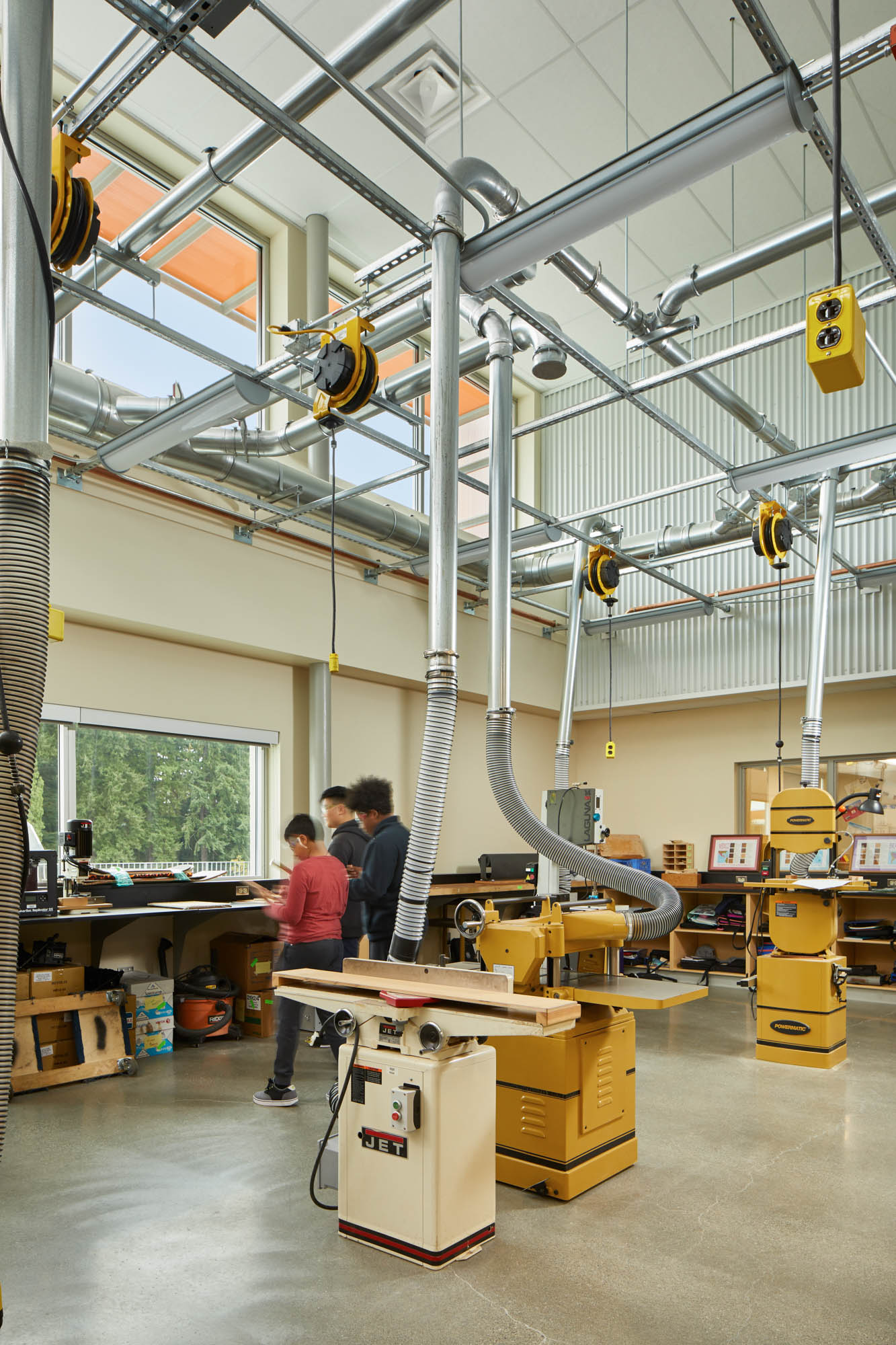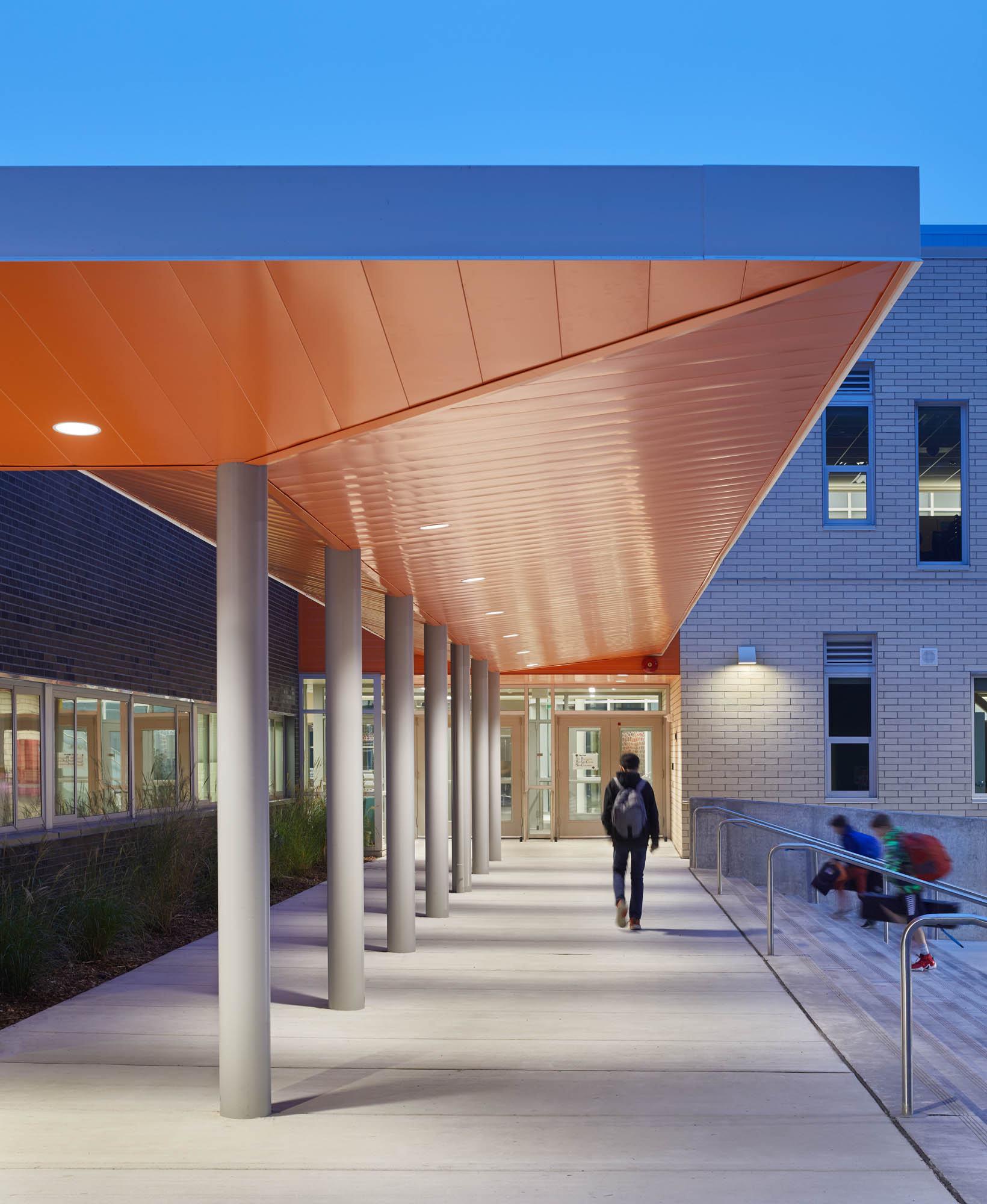Project Overview
With Nature at the Heart
Middle school can be a time of intense social growth and preoccupation, where one can lose sight of the broader environment around us. From a deep history of collaboration, the landscape architect and Bellevue School District were able to bring landscape and the natural environment back to the fore, and even inject its ever-increasing value into the core of the school building itself. Working with the architect, the team was able to unlid a portion of the central commons space to create a striking and highly visible oval-shaped courtyard that is just as serene and impactful from within the space as it is viewed from the interior spaces of the building through panoramic windows. An oval-shaped deck space overlooks multiple class-room sized outdoor learning spaces set above exposed rain-gardens used to treat the adjacent building’s run-off. As student’s move from the school building to the athletic fields in any direction, they pass through or adjacent to natural spaces. The landscape at Tillicum MS is not routine backdrop, instead fostering curiosity and consideration through creative biophilic design.

